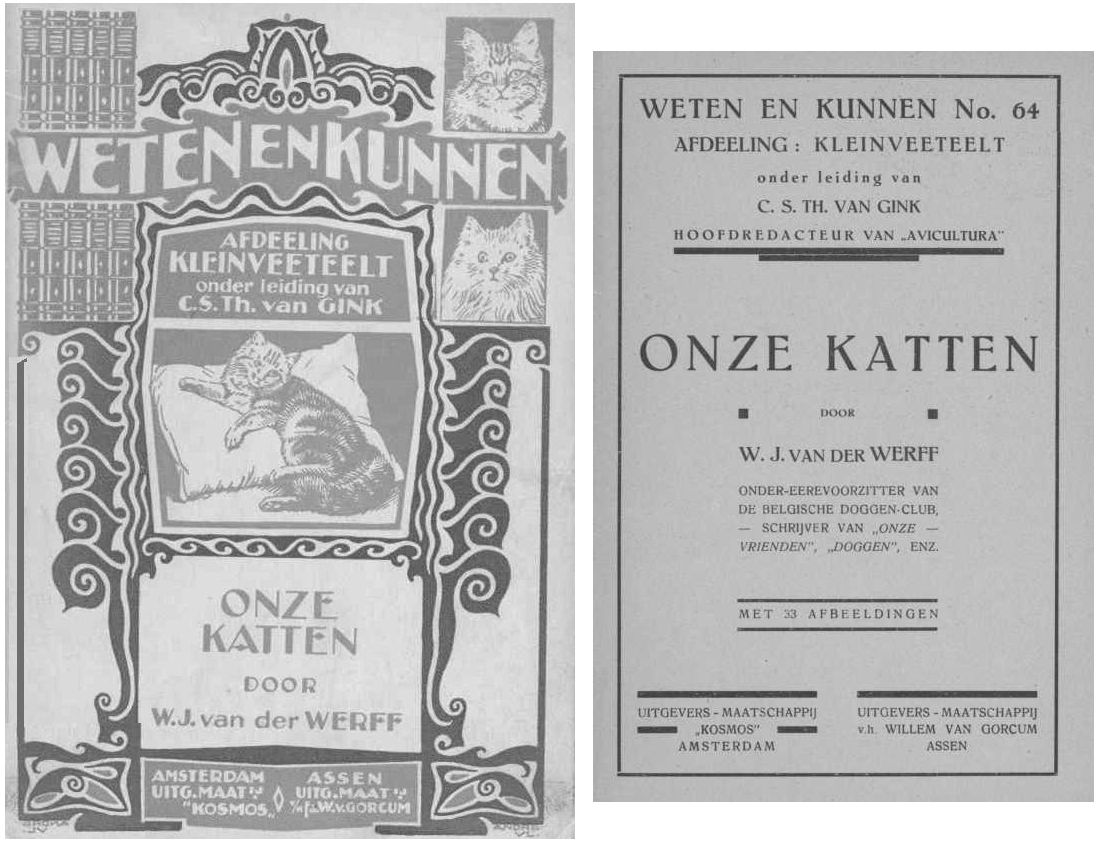
KNOW AND DO No. 64
DEPARTMENT OF SMALL LIVESTOCK
under the direction of C. S. TH. Van GINK
MAIN EDITOR OF "AVICULTURA"
SUB-PRESIDENT OF THE BELGIAN DOG CLUB, - WRITER OF "OUR FRIENDS", "DOGS", ETC.
WITH 33 IMAGES
PUBLISHERS - COMPANY "KOSMOS" AMSTERDAM
PUBLISHERS - COMPANY v.h. WILLEM VAN GORCUM ASSEN

CONTENTS.
I. Origin and History of the Domestic Cat
II. Domestic Cat Breeds
III. Feeding and Maintenance
IV. Illness and Nursing
V. Breeding and Showing Cats
"The passion for cats is that of great hearts".
(Mrs. Levesque.)
I. ORIGIN AND HISTORY OF THE DOMESTIC CAT.
Among our pets, there might not be one so neglected, unappreciated, and poorly understood as the cat. The offspring of the extensive, richly varied and also gifted genus felis, the domestic cat is the smallest, but by no means the least. Slender, graceful, keen-witted, and most intelligent, it might be assumed that she has always been a welcome guest and celebrated house guest; but this has faltered a lot. Man, - i.e. modern people, because in pagan antiquity people thought completely different about the cat - seemingly could not accept that the cat had an independent and proud character and not a slavish one. The cat was not unjustly beaten and abused, but, unlike the majority of dogs, she turned against her assailant with teeth and claws, even if that assailant was also her master. She wants to be a friend, an ally, an affable member of the family, but never a doormat or slave. And modern man, who likes to call himself the lord of creation is so little a real lord and so much a narrow-minded tyrant, then decreed that the cat flirted and flattered only out of greed, and was therefore a false and unreliable creature. Now the question is: what is false? False means one who approaches us benevolently, expresses love or friendship, wins our trust and our heart, and then, as soon as he has an advantage, turns his back on us, or attacks us, or hands us over to the enemy. Judas sold his divine master for thirty pieces of silver, and Brutus helped stab his benefactor. But I never heard of a cat attacking her benefactor for the sake of gaining some advantage from the betrayal.
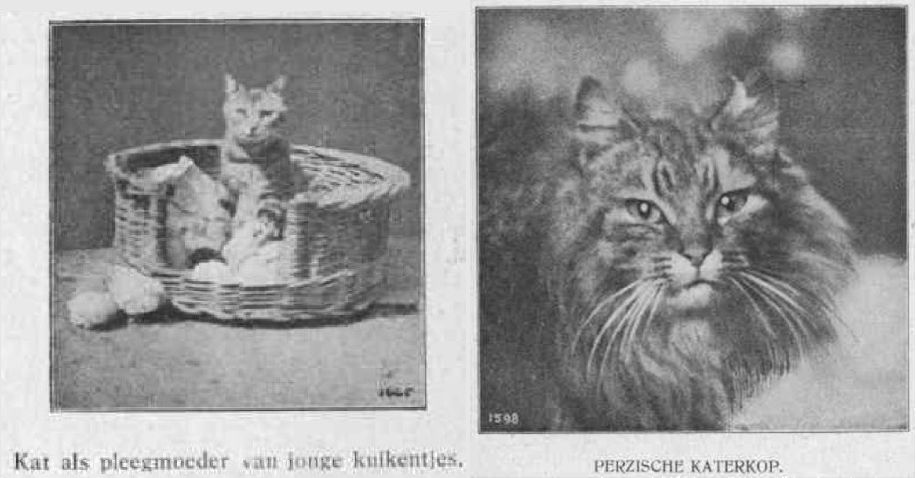
The great scientist Buffon, who wrote so much about all kinds of animals and who has been believed as gospel for so long, never knew or studied the domestic cat. He made the stupid statement that the cat is a false and treacherous beast, never to be trusted, and this judgment by someone who had a great name though he often spouted great nonsense[*] was faithfully copied year after year, and presented as fact by numerous bunglers and dabblers in the zoological field, who had had no eyes for the most favourable testimonies of Egyptians, Greeks, Romans, Arabs and Chinese about the little whiskered ones who were cherished, honoured guests in their homes and whose descendants are still favourites in their homes. These pseudo-experts of the cat did not do their own research or study of the animal that they wanted to describe, and it is regrettable that their falsehoods are generally believed more than the meticulous statements of the cat’s defenders, who have revealed the fruits of their studies particularly since the mid-nineteenth century. Opposing the judgment of Buffon, a man whose reputation has since been surpassed, stand the judgments of Mohammed, Pretarca, Tasso, Colbert, Cardinal Richelieu, Chateaubriand, Victor Hugo, John Payne, Sainte-Beuve, Baudelaire, Barrière, Francois Coppée, Harrison Weir, Louis Wain, Champfleury, Miss Frances Simpson and many others of great reputation and clear wit, who all praise the cat as a noble animal, prone to great love and loyalty, grateful and obedient, but only showing these good qualities when belonging to someone whose heart is in the right place and who treats the animal in question as he would like to be treated himself.
[* The mastiff is one of the oldest dog breeds, originating from Assyria, brought to England by the Phoenicians and found there by the Romans. Buffon, who seemed to know nothing of this beautiful dog but the fables of the free-range dogs, called him a bastard, the product of the crossing of a dog (which breed?) with a French guard dog.]
I spent my first part of my childhood among cats, and later I always had cats around me. Even today, in the autumn of my life, a cat is my last and most faithful companion, so I believe I know these animals well and thoroughly. Well now, after so many years of association with the little quick meowers, I can say with full certainty that the well-treated, well-groomed, well-housed cat is not only a feast for the eyes, a jewel of every room, both in the palace and the hovel, but also an appreciative, faithful creature, reminiscent in attitude and performance of the knight of the Middle Ages: a lover of the hunt, a brave warrior when challenged, generous towards weak or sick peers, neat in appearance, grateful for mercies and gentle words, but also an irreconcilable enemy of anyone who wilfully torments or mistreats it. The cat carries old, noble blood in its veins and is aware of that. Therefore, there is no friendship between her and the wicked, but there is great attachment between the little whiskered on and the person who wins his heart.
Where did this beautiful and noble animal come from?
It was commonly thought that the ancient Nubian-Egyptian wild cat, Felis maniculata, was the progenitor of all domestic cat breeds, especially since ancient paintings and well-preserved cat mummies convinced us that the subjects of the Pharaohs possessed this cat species. But later investigations have shown that while most of the smooth-haired cats come from the old Felis maniculata, the shaggy cats, which, curiously, are all of Asian descent, are not descended from this animal, and some of these cat breeds - the Chinese and the North Indian cat - were flourishing in an age before the cat of ancient Egypt was held in such high regard.
Some writers have also sometimes claimed that the domestic cat is descended from the wild cat of the European-Asian forests. This idea is completely unfounded. There is a great difference between the skeleton of a wild cat and a domestic cat and there is also the untameable character of the wild cat, which is much more unmanageable and malicious than the tiger, attests to this. When caught young or accidentally born in captivity, the wild cat remains wild, hiding fiercely in a corner of her hutch, growls, hisses and even strikes the hand that feeds her; the domestic cat is friendly, flattering and affectionate, and is highly sensitive and grateful for soft words and caresses. In addition, captive-bred descendants of wild animals, which have always been well fed, are generally larger and heavier than their untamed relatives. Bred in captivity and always well fed, lions and tigers can sometimes become colossal animals, far exceeding their wild ancestors in size and weight. This is completely different with the cat, because domestic cats of all breeds are much smaller and lighter than wild cats, which are found in the forests of their homeland. The domestic cats thus form a separate family, the smooth-haired members of which are most likely descended from Felis maniculata and whose long-haired, short-tailed, Russian Blue, Siamese and Malay members are descended from other purely Asian animals, whose exact primal forms have disappeared in the darkness of the ages and of whom nothing can be determined with certainty.
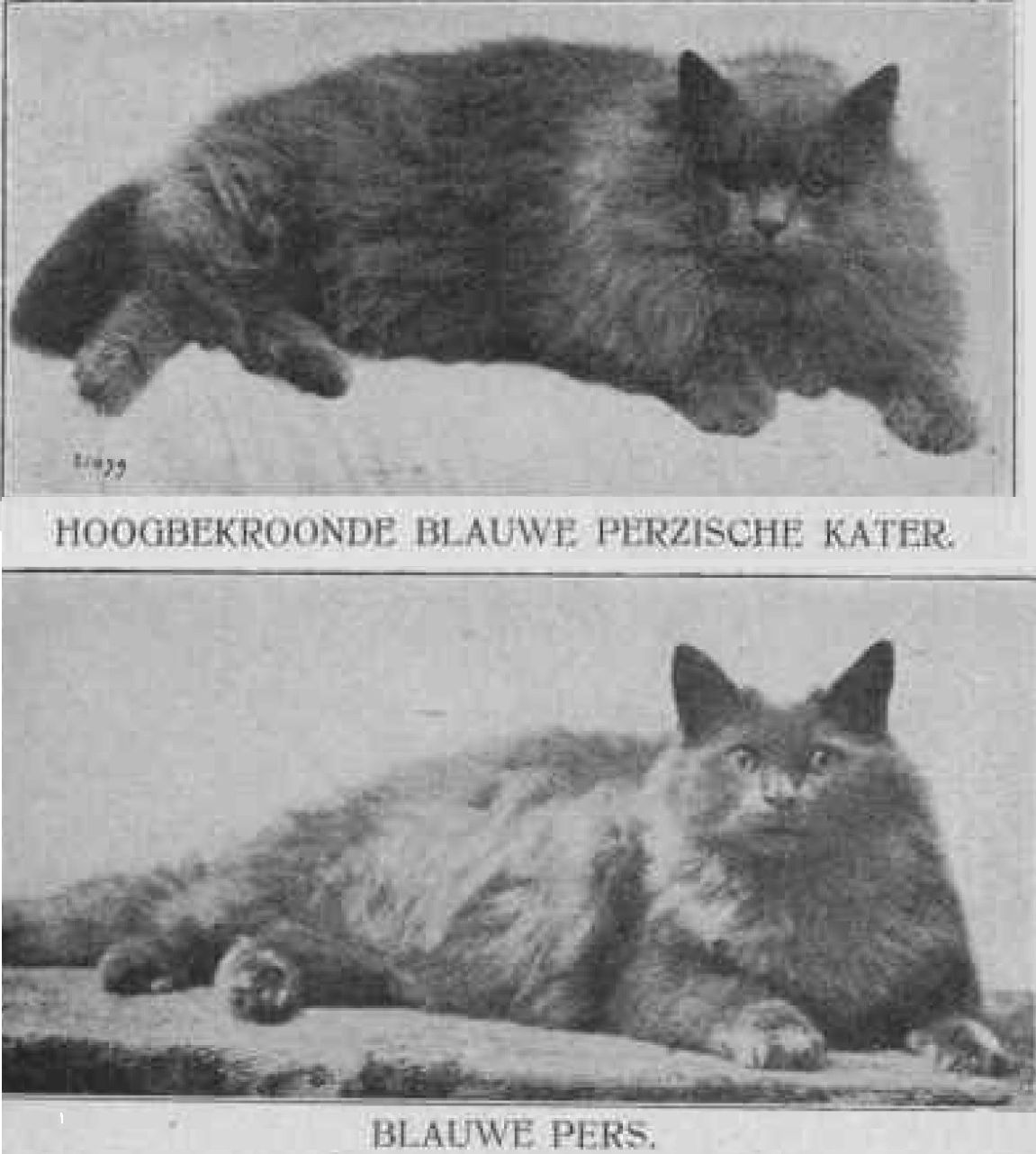
The common domestic cats of Europe, Asia and Africa come without question from the cats of the ancient Egyptians, who considered these animals sacred and highly revered. In Egypt there were two deities: Pasht, a woman with the head of a cat, and Bubastis, likewise a creature half man, half cat or lioness, to whom the cats were devoted. In the temples of Pasht, a number of beautiful and very clever cats were maintained, fed at the public expense and sometimes shown to the people of high status. In the sanctuaries of Bubastis, the "goddess of luminous shining night", not only cats were kept, but also lions, which were also highly regarded in Egypt.[*] The priests of both deities made sure that the sanctity of the cats was not compromised and that the animals were treated in accordance with the laws applicable to them. No-one was allowed to kill a cat; they had to be properly cared for in illness, injury or old age; superfluous young cats, which one did not wish to keep, had to be given to the priests serving the temples. Since cats grow and breed quickly, I think that the holy servants of Pasht and Bubastis must have sent many young cats to cat heaven in the Nile, as otherwise Egypt would not have had mountains of surplus cats. Even after the death of these friendly, holy, four-legged friends, they were still cared for. Temple cats and cats of notable persons were embalmed, put into precious wrappings, painted, and given a “death scroll”. The cats of the common people were first stripped of their fur and then dipped in resin and varnish, so that they looked like wooden cats. This second kind of mummy was not buried in tombs, but were deposited in the thousands and tens of thousands in rock caves and sand tombs, where later Arabs and Europeans dragged the petrified kitties back to use as fuel and as fertiliser on the land. The Egyptians, who were great masters of animal art, had not only great love for cats, but also great convenience. In old paintings and sculptures, cats have been immortalized catching fish for their masters and retrieving birds struck with arrows, which they took from the reeds, and even from the waters of the Nile.
[*The Egyptians also used war lions, who followed the Pharaoh in the field and were released on the enemy. In the Pinakoteek [Gallery] in Munich, a beautiful painting entitled "King Rhamses and His Lions of War" has been made based on an old wall painting in an Egyptian palace.]
From Egypt, the smooth-haired cat spread to Syria, Arabia and northern Afrika, later also to Greece and the Greek islands. The Romans delighted in the beautiful black, white and striped cats, which they brought from Alexandria to Italy and which found their way to the opulent courts of the emperors. Distinguished patricians and matrons owned cats, which were adorned with gold or silver collars, leg and ear rings, sometimes even jewelled ones - which would have been most unpleasant for the freedom-loving cats! At that time the beautiful and useful breed of Cyprus cats arose, long known as deft snake-catchers, which first declined through the stupid carelessness of the Turks in the nineteenth century, and later completely disappeared. From Italy, the domestic cat went to Gaul and some to Britain where, however, these animals were well established at the time of the Crusades and through trading at the ports of the later Turkish Empire, from where all manner of rare things were shipped to England.
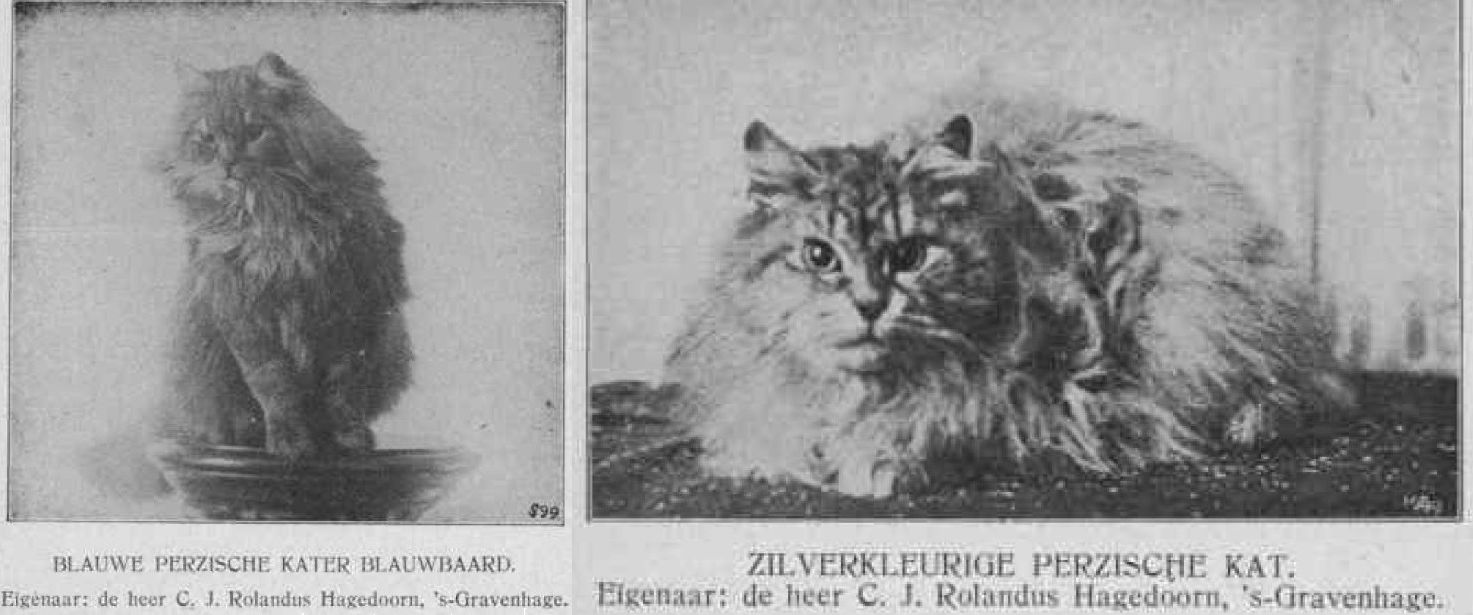
The smooth-haired domestic cat found the greatest support in Arabia and neighbouring countries. Islam had risen and Mohammed, the great prophet, preacher, statesman and general, who united the various tribes into a powerful, fiery nation, was also a cat lover. In his humble home in Medina and later in Mecca, where the greatest man of his time lived in austere simplicity, there were always some beautiful cats, who surrounded the prophet, slept on his couch, sometimes on his shoulder or sat behind him on the horse when he rode out. We know the story of Muezza, the favourite cat of this great man, who had just fallen asleep on the sleeve of his cloak when Mohammed was called to the mosque in Medina for urgent matters. Rather than disturbing his young favourite, the prophet sacrificed part of his clothing. He drew his dagger, cut off the cloak sleeve, and the little kitty slumbered quietly as the great man hurried to attend to interests of state. This act of his, who called himself the emissary of God, gave the cat special sanctification in the eyes of Mohammedans, and even today the beautiful, slender, flattering cat is a beloved guest in all palaces, houses, harems and caravanserais, where the green or red flag with the crescent flies, and where one is faithful to the teachings of the greatest of all Arabs.
So the rise of Islam also increased the star of the domestic cat. Cats were kept all over the Caliphate and there was a lively trade in these animals. This love for the trade in beautiful cats was maintained even after the fall of Ottoman power. The Seljuk and Ottoman Turks, the Mohammedan Persians, the Tartars and Indians were all lovers and breeders of noble cats. The Arabs brought many cats to Spain and Portugal. The Crusaders took beautiful cats to France, England, Italy and Germany, and later Spanish, Moroccan and Levantine traders offered their kitties for sale in European ports. These first imported cats commanded high prices for years, even in the days of Queen Elisabeth of England and King Henri IV of France. They spread all over Europe, except in the most Northern parts of Scandinavia. European settlers took them to all countries by sea. The whole world now knows the swift, smooth-haired cat, whose birthplace was the banks of the Nile.
The history of the long-haired, real Asian cat is less well known. We know from ancient Chinese encyclopedias that about 6,000 years before Christ the orange-yellow, long-haired cat existed in China and that it already had drooping ears, a sign of long domesticity. Also, in the Himalayas lived a beautiful long-haired, all-white breed of cat thousands of years ago. We know from ancient chronicles and from old paintings that Persia at the time of Darius and Xerxes, already had beautiful golden silver-striped cats. But how these animals spread to the West is obscure. The Greeks and Romans make no mention of them. Only after the raids of Sassanian army bands and after the emigration of Turkoman tribes from Turan to Asia Minor, do we find reports of the beautiful, long-haired, often blue-eyed cats of the oldest continent, which, however, emerged quite late from the darkness. The conquest of Constantinople by the Turks, made that city the centre of Eastern splendour and wealth, also brought the proud, long-haired kitties in large numbers to Europe and gradually to the more civilized West, where now, aided by the force of fashion, they have supplanted the equally beautiful, but more simple, smooth-haired colleagues in many circles.
II. DOMESTIC CAT BREEDS
For centuries, animal writers have divided dogs into groups, families and breeds, but this was not done with regard to domestic cats. In listing the different breeds of the domestic cat, they were usually described country by country, disregarding related breeds, and thus confusing longhair and shorthair together. The cat was also a kind of outcast in literature, in which only the essentials were mentioned and they were not considered worthy of thorough study and description. It was not until relatively recent times, in 1871, when the passion for beautiful, noble cats took off vigorously in competitive England and Harrison Weir wrote about cats at about the same time as the French cat-lover Champfleury, that people began to think about systematic classification of domestic cat breeds.
This classification is best done according to the hair and general appearance of the cats. Among them are races that resemble the lion, the greatest and most senior member of the great family Felis. The scions of this race have broad skulls, small, non-pointed ears, long, thick manes on the head, neck and chest, have thick hair over the whole body, and have a genteel and stately gaze, and the royal, sometimes somewhat slow manners, of the true lion. They sometimes become very large and heavy. Curiously enough, their origin is always Asia, although the lion itself is found in only a few corners of that continent. A second group of cats contains breeds that resemble the tiger and panther. These animals have the short head, mobile ears, slender body, ever-moving tail, and smooth hair of their great relatives, whom they equal in speed, and whose great jumps they mimic. Like tigers and leopards, they are solitary, they do not like to meet strange members of their own species and sometimes they fight to the death. They are more lively, quicker, often also wiser than the long-haired cats, who are often spoiled and pampered by an all too easy luxury life, so that some of them, in Europe, always go to bed with hot water bottles or sandbags in winter. The third group is very similar to the lynx. Large ears, rather heavy bodies, with short tails or no tail at all i.e. the cats of the Isle of Man, Japan and other little-visited countries; they have a very distinct appearance and have something about them that is reminiscent of monstrous prehistoric creatures. In addition to these three main groups, the cat genus has several other members - the cats of Paraguay, Madagascar, etc., who have a type quite different from the three groups noted above. It is best to discuss these animals completely separately and to not group them where they do not belong.
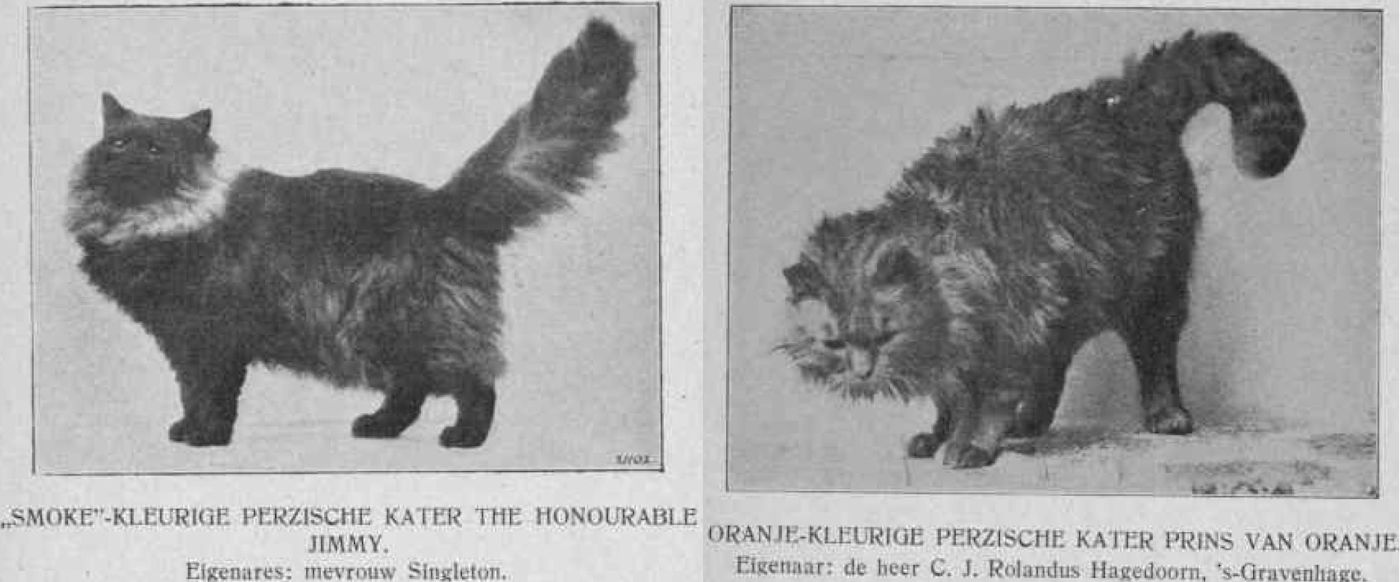
The first group, the lion-like cats, includes:
1. the Angora cat, also known as the Turkish cat, known in Europe for centuries. Her birthplace was Central Asia, especially the regions of Khorassan, Khiva, Bokhara and the land of the Turkomans. In the ninth or tenth century, this cat came with Turkish tribes, straight through Persia, to Asia Minor and northern Syria, where Turkish farmers and shepherds found a new homeland, first under the reign of the Seljuk, and under the Ottoman sultans. The ancient Greeks and Romans did not know this cat as it only came to Europe after the fall of Constantinople.
The Angora cat is a rather sturdy animal, bigger and heavier than the normal smooth-haired cat. She has long silky hair that grows all over the body. Her tail resembles a large feather. The are - or more correctly, were – found in many colours. The purebred Angora cat - so rare today - is consistently plain, never striped or spotted. White, black, blue and bright orange have been the colours of the Angora cat since her first appearance in Asia Minor, and her eyes had to harmonize with the hair colour. Its commercial value was quite high and in the nineteenth century, Turkish merchants brought these animals to India, Afghanistan and South Persia, where the rich harem ladies entertained them, especially the white Angora with blue eyes.
2. The Persian cat. The Persian cat is larger, stouter and has been known for longer than the previous one. She has a wider, more powerful head, more soulful eyes, heavier claws and a longer mane around her neck than her Turkish colleague. This is a very old breed, and according to sculptures and inscriptions from the ruins of Susa and Persepolis it was already known to the court of Cambyses and Darius. Since the Persians - first the pagans and later also the Mohammedan inhabitants of Iran - have always done a lot of sculpting and painting and often painted the walls of their palaces and other large buildings, one can clearly see how the cat in Persia flowered. Under the princes of the great world monarchy, among the Sassanians, under the house of Abbas, later under the house of Kadshar, the great, majestic, hairy cat of Persia was always a favourite animal in that country, which carries a lion on its coat of arms, and therefore held this cat in high regard. Since grey antiquity, the Persian cats were already beautifully striped. The silver tabby cats of the Sassanian court were famous throughout the East. Nadir-shah's golden brown tabby cats were sung of by a poet. Nowadays few people have these beautiful cats in Persia. English travellers and diplomats bought up the best specimens for big money in the past; the last shahs thought of things other than their strain of national court cats; and the best animals of this breed are now found in England, as we shall see in more detail later.
3. The cat of Caucasia. This is a beautiful, sturdy cat, which bears much resemblance to the Persian, but differs from it by its smaller head, shorter hair and less shaggy tail. This cat is usually orange, yellow or light brown, sometimes plain, then striped, and was most likely imported from Persia in earlier centuries, but due to climatic influences and perhaps also crossing with smooth-haired Russian cats, much of its appearance has changed. It is strange, however, that this cat, both in Kabarda and Abkhasia, as in Lesghistan and the Southern steppes, shows the same type, although the climate differs a lot in all these Caucasian countries.
4. Russian long-haired cats. The former Czarist empire, a world in itself, had several cat breeds, both longhairs and shorthairs. The Tobolsk is a red long-haired cat, often a formidable animal, weighing well over twenty pounds. This animal resembles the mighty tiger of Siberia, which it resembles in miniature, except for the stripes in the thick fur. Wide head, formidable claws and long, thick whiskers give it a wild appearance which is completely unjust. The Tobolsk red cat is very gentle as a rule. Then we have the cat of Kazan, a long-haired blue or silvery blue cat, sometimes completely black or black with blue limbs. This cat is very similar to the old Angora cat and probably has the same origin. After all, Kazan was long an independent Tartar empire and the Tartars of that country and the Turkomans of Khorassan traded with each other and were also blood relatives. The Crimea cat is completely white and its coat is shorter than that of the Angora cat, presumably from crossing with short-haired cats of Romania or Poland. However, this last cat was already very rare in the period 1853-56 and is probably almost extinct now.
5. Himalaya Cat. In the high mountains of Northern India, on the borders of Tibet, in rugged Nepal and other neighbouring lands, where the light-coloured snow leopard lives and white partridges flutter across the perennial snowfields, English travellers found a breed of large, strong, heavy, long-haired cats, completely white in colour and with the most beautiful blue eyes imaginable. Some of these animals were brought to Europe and a certain Mrs. McLaren Morrison exhibited such cats at the London exhibitions. However, these cats have not met with great success in Europe. They could not tolerate the climate well, were very short of breath in summer in their thick coats, got homesick and soon died. They do not seem to have left purebred offspring, but some Indian males have helped bring nicer blue eyes and thicker fur into other long-haired white cats.
6. Chinese long-haired cat. Vast China, a world in itself like Russia, has some breeds of cats, which are almost no different from those of Europe and Japan, but among which there is one curious breed: the lop-eared cat. Hanging ears point to ancient domestication and are not seen by any of the wild members of the cat family. Indeed, it has also been learned from ancient Chinese writers and dictionaries that long before the heyday of Egypt and Assyria, China was a prosperous country, with Nanking as its capital, and Nanking people already had cats with long hair, yellow in colour, first with semi-erect ears, then with hanging ears, like the ears of dwarf spaniels and pugs, which are also of Chinese origin.
The modern long-haired cat of China is of ordinary size, covered with yellow, orange or white hair, not flecked with other colours. Her muzzle is short; her eyes are golden and very soft in look; her tail, also very shaggy, is often carried curled or curved over the back like a dog's tail. She must be a friendly, very cuddly animal, very attached to her master. The French writer Pierre Loti, who was a sea officer, had a few orange-coloured Chinese cats on his ship for a long time, about which he has elaborated with great praise.
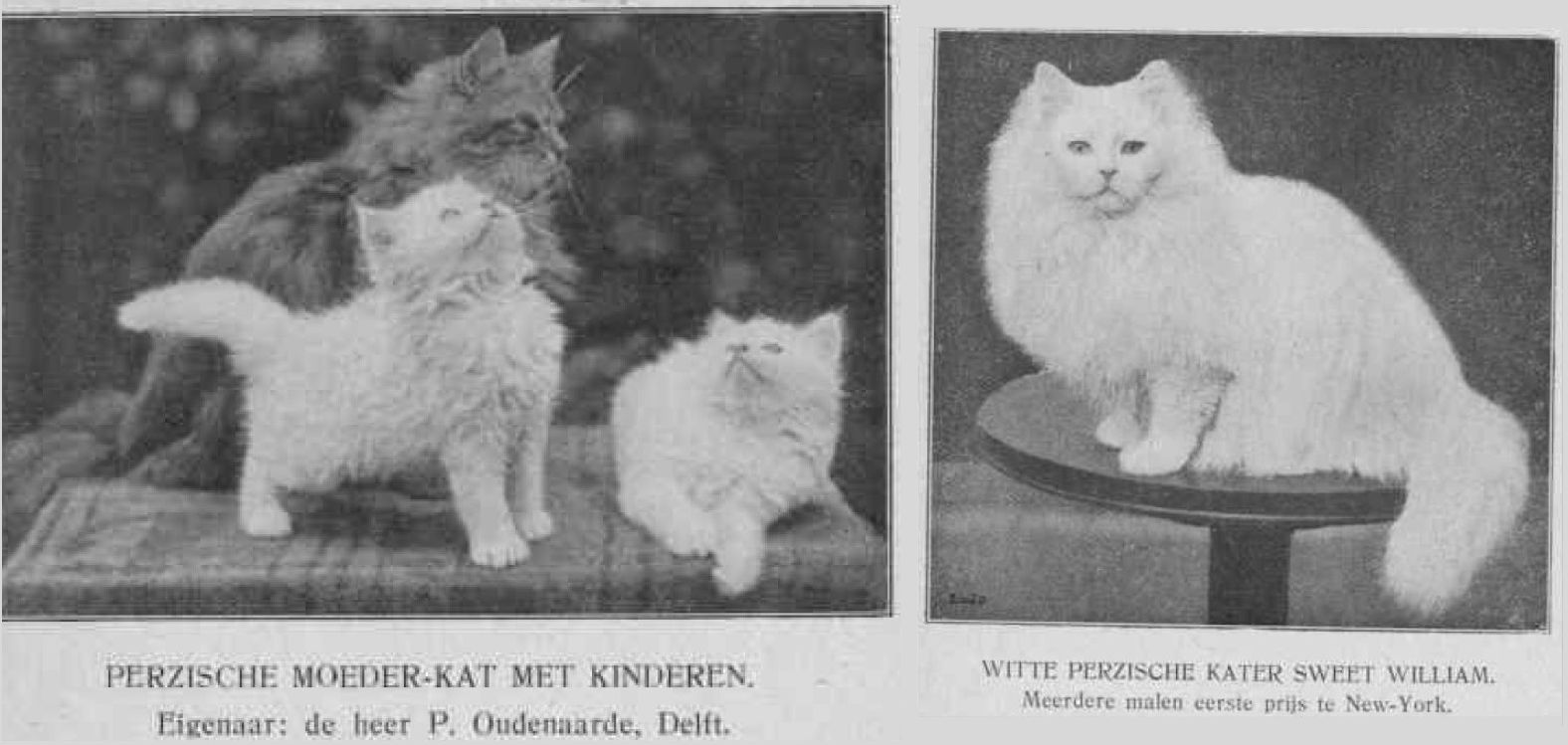
All these breeds of the long-haired domestic cat were previously bred in their different varieties and exhibited at cat shows. Later, crosses were made several times, for example when a breeder wanted to give his strain of white cats the beautiful eyes of the Indian cat, or another gave his black Angora broader skulls by mating with Persians. Finally, the leading cat authorities in England - where the feline hobby flourishes in more than all other countries - decided to drop all of these separate names. In 1887 it was now decided that people would no longer speak of Angoras, Persians, Russians, etc.; but would recognise all long-haired cats under one name: Persians or Longhairs. Something similar had been done in 1878 in Germany with the huge dogs, when the leading German cynologists decided that people would no longer speak of Ulmer dogs, Danish dogs, boar hounds, fighting dogs, etc., but that from now on there would be a single breed called the Deutsche Dogge [Great Dane]. Likewise, cat fanciers created a single long-haired breed of cat in England, whose standards were carefully measured and all recognized colours and colours of eyes were decided. These colours are:
silver or chinchilla, with green or gold eyes,
shaded silver, with green or gold eyes,
silver tabby, with amber yellow or dark brown eyes,
smoke-coloured (smoke), with orange eyes,
blue, in all kinds of shades, with orange eyes,
black, with amber or orange eyes,
brown tabby, with amber, brown or green eyes,
orange and red (solid and tabby), with orange or brown eyes
yellow (cream), with orange or brown eyes,
white, with blue eyes,[*]
tricolour [tortoiseshell] and tricolour with white, with orange eyes.
[* In America, where the English breed standards were recognized, golden eyes are also allowed in all white cats.]
In France, this classification has not been adhered to, and many different breeds of long-haired cats are still requested. The French, by the way, never had much insight into rational animal breeding. They generally loved their pets, and French writers and poets have extolled many four-legged darlings. But nowhere are so many bastards seen at the shows as in France, and almost nowhere are native races so neglected as in France. No wonder, then, that the cat fancy in France is far behind that of England, America and Canada.
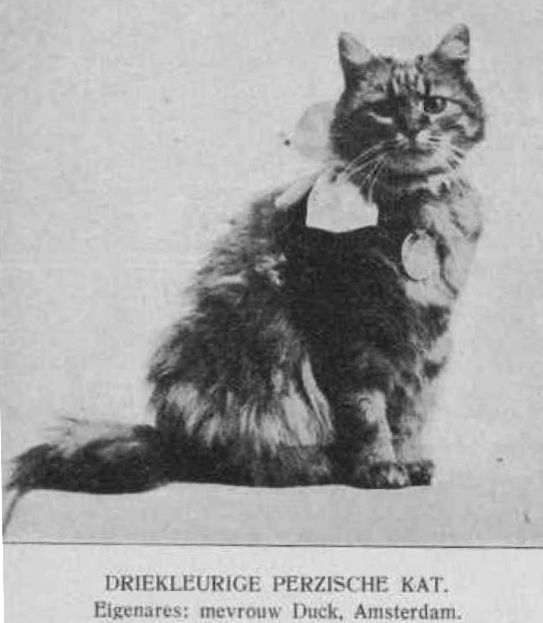
The second group, the tiger-like cats includes:
l. The Abyssinian cat. This cat descends in a straight line from the primal tame smooth-haired cat, the Nubian-Egyptian favourite of Pasht. She is slightly larger than the European smooth-haired cat, is lower on the legs, has heavier bones and a furry head. The ears are not pointed at the end, but round, and dark brown, sometimes black. The fine, short hair is yellow, yellowish-grey, silvery yellow, sometimes speckled with brown, but never striped. The eyes are orange or tawny. She occasionally occurs in Europe and is bred diligently by some enthusiasts in England. She tolerates the Northern climate very well and, if treated well, has a very sweet mood, so whoever has owned an Abyssinian cat always keeps this breed alive.
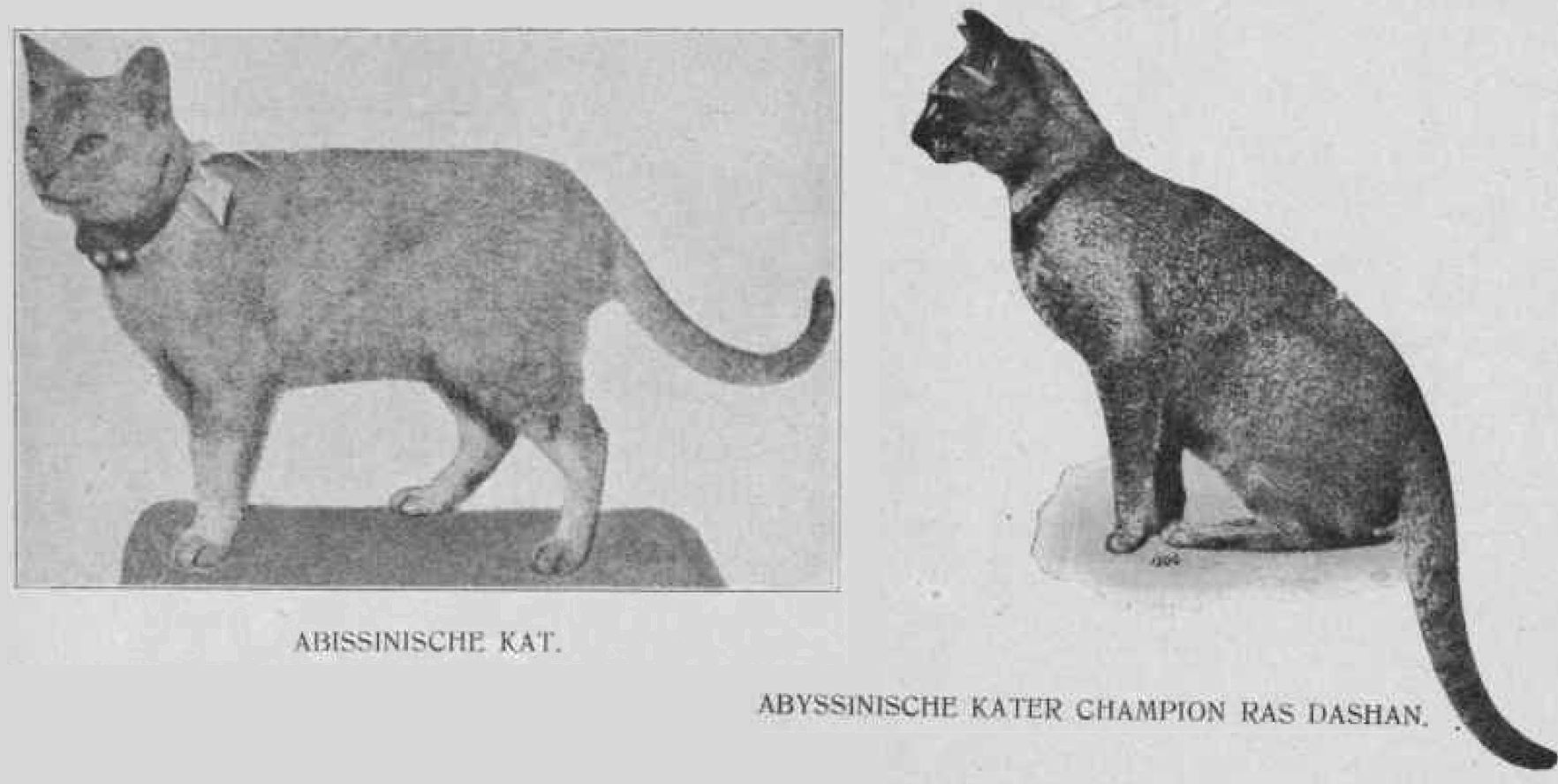
2. The ordinary smooth-haired cat. This animal also comes from the cat of the ancient Egyptians, but forms numerous varieties, which have gradually been created by climatic influences, by different food and also by crossing with wild cats. Since the times of the Romans, who brought these quick, slender, miniature tigers from Egypt to the West, the smooth-haired cat has spread over almost the entire civilized world and has become the companion of all ages. They can be found everywhere, except with Eskimos, or on Tierra del Fuego and some islands of the South Sea. She is with us everywhere, just like the poor and the hungry sparrows.
There are smooth-haired cat in all kinds of colours.
The all-black cats are numerous, especially in North Africa, where a beautiful black cats with large golden eyes are found in the villages of the farming Cabyls and in the cities of Tunis, Algeria and Morocco. This cat was first known in Europe from the African troops of the French army, Spahis, Zouaves and Turcos, as the Arab and Berber soldiers of these troops carried many large black cats during the Crimean War when they went from Africa via France to the Turkish East and Russia. These cats were as loyal to their masters as dogs, and on the battlefields around Sevastopol, a dead or injured African was often found with a great black cat keeping watch and furiously resisting the strange hands which wanted to touch its beloved master. These cats came slowly from the African army to France, where they are often found among people who have been in the North African colonies. The beautiful black cats, who used to trot around in the artistic Parisian coffee house "Le Chat Noir", were also of Algerian descent and astonished many people by their tall stature and affable nature.
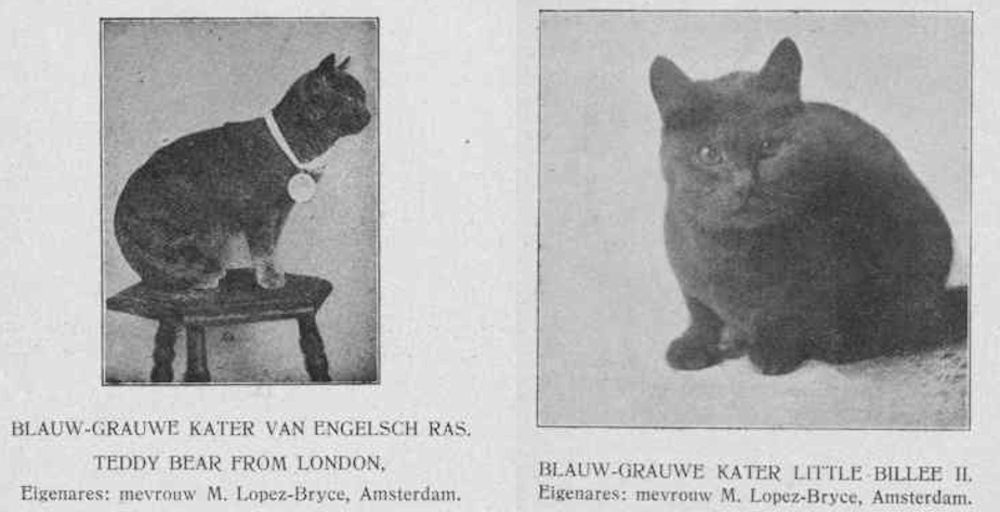
Even more numerous are the striped cats, known as tabbies in England, and as chats rayes in France. They are grey, blue-grey, brown, or yellow-brown, marked with broad flames or with stripes like the royal tiger. Some of these cats have spots instead of stripes, like the spots of a panther. In England such cats are called spotted tabbies and in France chats tigrés or chats tachetés. However, they are rarer than the striped cats.
Orange and red are also common colours among cats. However, these colours are almost always striped with darker orange or red, so that completely solid-coloured cats are rarities, and even then their legs are often striped. In Spain people have had a nice race of orange cats for centuries, a bit more pointed than other domestic cats, good mousers and very intelligent. There is also a beautiful breed of red smooth-haired cat in Russia, which used to be found on ships that sailed in the Baltic Sea and the Arctic Sea. I myself once had a tomcat of this breed that weighed over twenty-five pounds and was a very loyal animal. Nowadays, these red Russians are no longer heard of - I think that the great poverty in Russia has put them into the casseroles of the masses.
Closely related to the orange and red cats are the tricolour cats, called tortoiseshell in English, the Portugaise in French. The English variety is a mix of black, red and yellow in small patches with no stripes in the red and yellow. Cats of this colour that have white markings on the muzzle, neck, chest and legs, are called tortoiseshell and white. The French variety is always white with many small patches of black, red or yellow, some spots are only one colour, some are a mix of colours. The smaller the spots, the better. In the past, many such cats were taken to France from Portugal and although this has not been done for a long time, they are still called Portuguese. It is remarkable that this multi-coloured variety is almost exclusively female. Males of this colour are hardly ever born and in competitive England there is only the memory of two tortoiseshell males who were once exhibited at cat shows.[*] So this colour is always produced by mating tricolour cats with orange or black males, or by pairing black with orange.
[* These two males were Mrs. Herring’s King Saul and Lady Alexander of Ballochmyle’s Samson, who, among other things, were exhibited at the major National Cat Club shows in 1899 and received the 1st and 2nd prize under the judge C. A. House.]
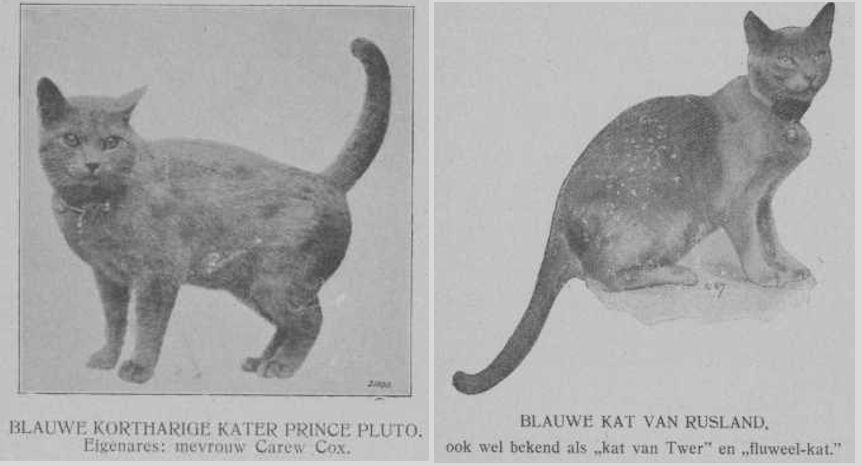
Solid blue, ranging from mouse-grey to bright blue, is another colour found in smooth-haired cats. The age-old Carthusian cat was blue-grey, in all kinds of shades; it originated in Switzerland or Germany and was mainly kept in monasteries, because its grey fur resembled the colour of the Carthusian monks’ robes. A lighter blue cat was common in Serbia and Bosnia. A beautiful bright blue cat originally appeared in Central Russia, especially along the banks of the Volga, and lived there in the forests both as a pet and as a wild animal. This cat soon caught the attention of Western enthusiasts and many of them were taken to England and crossed there with the Carthusian cats. The blue Russian cat has a more pointed head, longer muzzle, ears and tail than the other smooth-haired cats. Her coat is very short and silky and feels like velvet or plush. An oddity of this breed is the love shown by the males to their offspring. While ordinary European males tend to devour their squeaky, helpless offspring, the Russian blue tomcat watches over a nest of little ones, defending them from the touch of other animals and people, even taking them food as soon as they begin to chew. It’s something like an atavistic memory of the time when these cats were all wild and lived in the steppes, where the male predators dragged prey to the burrow when the female had young.
Solid white is also a beautiful colour in smooth-haired cats, especially when the animal is powerful and well built. Blue eyes give a white cat’s face something human and friendly and thus, from a beauty point of view, is superior to golden or grey. Green eyes look awful in a solid white cat and point to it being a hybrid.
In the Greek islands, especially in Cyprus, for centuries before Roman rule, there was a beautiful race of cats that were blue-grey striped with black, without any white markings, with black gums, lips and soles and with dark tongues, like the Chow-chow or Chinese Keeshond. These cats were distinguished by the deft way in which they caught snakes, even very poisonous ones, and were therefore held in high regard, first by the pagan priests and later with the Christian monks in Cyprus. However, under the miserable mismanagement of the Turks who abruptly took the most beautiful cats from their owners and took them to Constantinople and other fortresses, the breed sadly deteriorated and finally died out in its pure form in 1878, when England assumed control of Cyprus; the remainder are mongrelised by crossing with other cats.
Although the Cyprus cat has thus become a myth for almost fifty years, ignorant and fraudulent people continue to call tabby cats Cyprus cats. Yes, some dimwits sometimes speak and write of “Cyprus Persians” or “Cyrus Angoras!” This is because the literature on cats in our country has always been so miserable that anyone unable to read the works of foreign writers about these animals was condemned to believe the great nonsense written by other ignorant people.
Of all these types of ordinary smooth-haired cat, some are spotted or marked with white. However, these white markings are highly reprehensible, a sign of weakening, deterioration, hybridity. However, there is one exception, namely the black cat with white muzzle, throat, chest, belly and feet. This variety forms a separate breed, originally from Germany, which is why it was previously also called the Swabian cat. These animals breed true when they are bred scientifically; when they are interbred with other cats, this pattern appears time and time again in both genders.
3. The Siamese Cat.
This cat is one of the most beautiful and noble animals in the genus. She is slightly smaller in stature than the European smooth-haired cat, has much finer hair, which feels like the hair of a dog or panther, blue eyes and a beautiful yellow colour, which is further emphasized by a chocolate-coloured or black mask and by similarly coloured feet and tail tip.
The Siamese cat is very friendly, very loyal to her owners and very trainable. She swims excellently in her water-rich native land, where she knows how to fish very skilfully for herself, but in the cold water of Europe she does not get a good swim. This beautiful cat has long been known to English fanciers and was, even until the latter half of the nineteenth century, kept mainly in the palace of the king of Siam. This monarch gave some young cats to diplomats and travellers; other young animals were obtained by bribing court officials; and so the "sacred cat" of Siam came into the hands of Europeans and to cat shows. This cat was called "sacred" in Siam because an ancient prophecy predicted that Buddha will return to earth one more time in the guise of such a cat. It is curious that young Siamese cats are completely white at birth and that the yellow colour and the dark markings on the muzzle, feet and tail only appear later.
There is another kind of domestic cat in Siam, which is completely blue or chocolate-coloured, but which is held in much less esteem than the royal yellow.
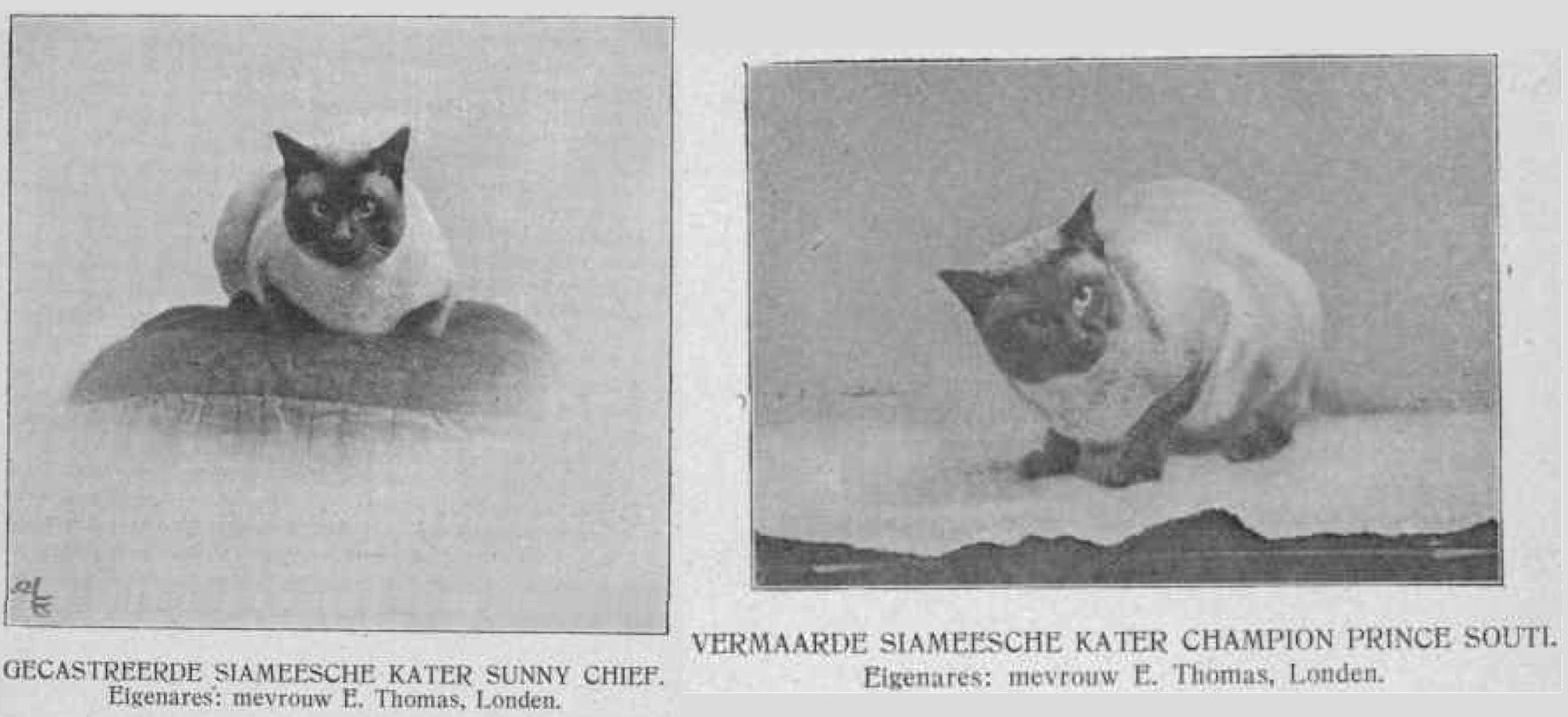
4. The Malayan cat.
This animal is smaller and finer than the smooth-haired cats of other countries, with very short ears and silky hair. Many cats of this breed have a broken or twisted tail, such as the crooked tail of the bulldogs. These cats are found in Malacca, the Sunda Islands and the Philippines. Its colour is bluish-grey, with fine black stripes, and the fur of these animals has a marvellous glow, as seen on the surface of a calm sea.
All these smooth-haired cats of the tiger type, with the exception of Abyssinians, Siamese and Malays, are classified in England as short-haired or European cats.
The following colour varieties are recognized:
Completely white, with blue eyes. *
Entirely black, with golden or orange eyes.
Black and white, with golden or orange eyes. **
Blue, with orange eyes.
Tricolour, [tortoiseshell] with orange eyes.
Tricolour and white, with orange eyes.
Silver tabby, with green or orange eyes.
Brown tabby, with orange or green eyes.
Orange and red, with dark brown or golden brown eyes.
[* In America and Canada, golden eyes are also recognized in these cats. Gray and green eyes are absolutely banned in white cats.]
[** These cats have a separate club in England, the Black-and-White Club. The same also occurs in America]
To the third group: the lynx-like cats include:
1. The Isle of Man cat.
This cat is a big, sturdy animal, much more solid than the other European cats. She has a broad skull, broad chest, and heavy legs, the back legs being longer than the front, so that she has a peculiar waddling gait when she walks slowly. Her ears are quite long and her tail is either completely absent or is just a small stub. The hair of this cat is like that of other smooth-haired cats and it also has a softer feel underneath. They come in all sorts of colours, even solid black and solid white, and the eyes must match their colour, as has been stated for the ordinary smooth-haired cats.
This cat used to be more numerous than it is now. Nowadays only a few Manx cats appear at the largest English cat shows.
2. The Madagascar cat.
This cat is very similar to her Manx colleague, but is smaller, shaggy-haired and completely black. She has never been exhibited at English cat shows, but has sometimes appeared at a show in Paris.
3. Japanese cat.
The pure Japanese cat, the native of Nippon and other islands of the curious "Empire of the Rising Sun", is a broad and corpulent animal, low on the legs, with a rather small head, very smooth hair, and a stump tail, a knotted tail or else completely tailless. Her eyes are green or golden green. Her temperament is sweet, almost imperturbable and this makes her a beloved roommate. However, she has little appetite for mouse hunting, and other animals are often used for this purpose in Japan, such as ferrets, foxes and mongooses. This curious cat hardly ever comes to Europe. The colour of this cat is usually yellow, white with yellow spots, white with grey spots, white with yellow and grey spots, and sometimes completely white.
Besides the cats which belong to these three main groups, there are also other breeds or varieties of felis domestica, which have a particularly peculiar shape or colour and do not resemble their bigger relatives of the extended Felis family.
The Paraguay cat is smaller than the other cat breeds, with a fairly-pointed muzzle, black eyes, and shaggy black fur, but its ears and tail are hairless and smooth like the skin of a frog or snake, and lighter in colour. This cat seems to be of ancient Indian origin, is not related to the wild Pampas cat and is characterized by its great enmity against cats of other breeds. Towards its owners, however, it is a fairly affable and useful pet, cleaning up nests of mice, rats, small snakes, and other troublesome houseguests.
The West African cat lives from Gambia to Gabon, both in the wild and tame in the villages of the natives. It is not certain whether this cat has been tamed by the Negroes, or whether the untamed offspring of this breed fled from the villages and became wild. This cat is sturdy, walks on high, rather slender legs like a cheetah, has long ears and medium hair. The curious thing about this already strange animal is that its skin has many folds on the head, neck, shoulders and back, as can be seen in Great Danes. Her colour is black and sometimes greyish on the extremities. This animal hunts mice and all kinds of small animals with great enthusiasm.
The Kafferland cat is the same size and shape as the smooth-haired European cats. Her colour, however, is highly peculiar. The Kaffer cat is often blue-grey or dark blue with a red stripe along the back. There are also some that are white with blue spots, and white with red spots. This cat lives by the dozen in the huts of the Matabels, Zulus, Pondos and other Kaffer tribes and has a lovely hunting field in the grassy plains and low bushes of South Africa, teeming with voles, rats, lizards and other small animals.
The cat of East Africa, which occurs from Uganda to Somali country and Zanzibar, is quite large, yellow with faint dark spots, somewhat resembling the wild serval and very tame. This cat can sleep for a very long time, which is due to the warm climate, by the way, and is only lively in the evening, at night, and on the warpath against nibbling animals and bats. The Arabs of East Africa highly value this cat and claim that their ancestors brought this breed from Arabia.
These four strange cat species are very rare in Europe and are only found on a few occasions in zoos, or on ships which regularly sail to the distant countries of their origin. Cat shows in London and Paris have occasionally shown specimens of these animals, the property of returned travellers or colonial officials, who had acquired a quirky cat in the distant land.
III. FEEDING AND MAINTENANCE.
In general, cats were, and still and are, poorly fed and cared for in our country. Born meat eaters - as her teeth and intestinal tract indicate - for centuries they have been given a diet of bread, meal, potatoes, with a little or no milk. For animal food, on which cats are nevertheless dependent, they received all kinds of filthy waste from tripe, lung, fish heads, herring offal, herring skins and shrimp shells, as well as bones and fishbones. It is no wonder that cats fed in this way left much to be desired in size and beauty, that her skeleton became thin and delicate, that her skull lacked the broad curve, that her hair became dull and her appearance listless. Yet another drawback of this highly incorrect diet was that it made the cat a thief and a robber. The independent cat, completely different from the more slavish dog, could climb and clamber, fleeing the inhospitable house which she saw only as sleeping accommodation, going over walls and roofs on raids: stealing meat from kitchens, birds from cages, fish from bowls and aquariums, catching rats, mice, frogs and sparrows, and in this way providing the necessary meat which stupid miserly people kept from her. In the country, felis domestica also became a poacher and feasted on young hares and partridges, sometimes on the chickens and ducklings of remote houses. This way of feeding did not help to make domestic cat more loyal and obedient because, as thorough experts of the great feline predators, Barnum, Salva, Havèmann and Hagenbeck, have testified, the cat’s love for man is through the stomach to the heart, and a good and effective food is the magic product with which a lot of ladies and gentlemen can work wonders.
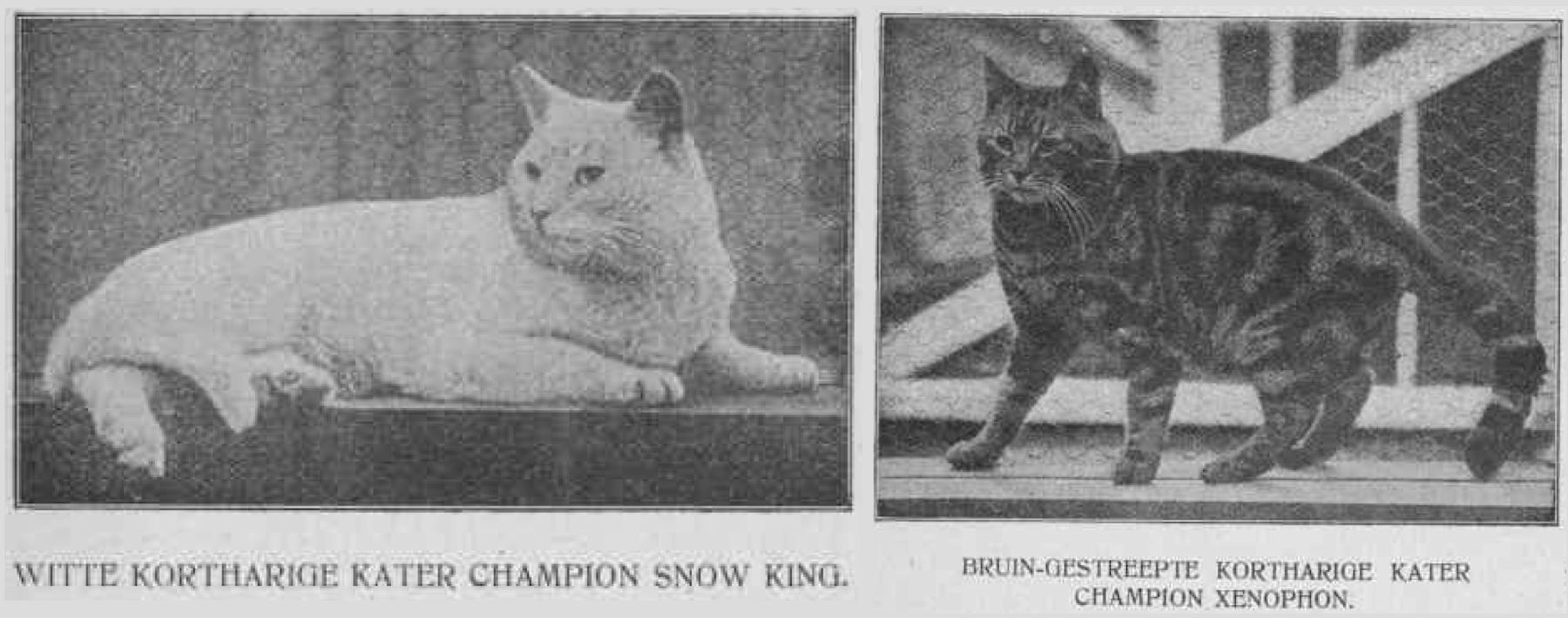
Anyone who wants to have the right pleasure, enjoyment and gratitude of his cat or cats, should necessarily start with the young, recently taken from the mother, and treat them appropriately and according to their requirements. As a rule young kittens are taken from the mother too early, at least in our country where cat breeding is usually not done scientifically and competitively, but chaotically. Animals of four to six weeks old are already taken to new homes as poor orphans. This should be done at the age of eight weeks, when the young can manage better without its mother’s milk or care. An eight-week-old animal is given a soft bed, provided with a cover, so that the sleeping kitten will not get cold on its back. The diet should consist of a small amount of appropriate food six times a day.
Tapiocca milk pudding, stale bread, regular rusk and a little bit of white sugar[*] is an excellent food. Pure water for drinking. Not because drinking milk would give it sore eyes, as said in water-and-firemen’s tales,[**] but because the kitties should soon turn to eating raw meat, and that meat and milk should not be enjoyed together. This gives rise to incorrect fermentation in the intestines, and therefore to the old Jewish laws - full of wisdom and which one may still pay close attention to today – which forbid the eating meat and milk together. At the age of eight weeks, therefore, the feeding of meat is started and the young pupil is given daily a small piece of lean beef, mutton or horse meat, which must be scraped with a very sharp knife until it becomes a kind of paste. As the cat grows larger, the ration of meat is increased, which, according to the age and size of the animal, may increase to one or two ounces per day.
[*Brown sugar has a laxative effect on young animals and is therefore not suitable for them.]
[** Translator’s note: A water-and-fire shop was a shop where one could buy hot water heated on a fire. Glowing coals were also available and were bought for starting one’s own stove or to fill an oven. The shops were a common sight until the first half of the twentieth century. They went into decline around the time of the Second World War because an increasing number of homes had gas connections and modern kitchens. The shopkeeper was called the water-and-fire man/woman. Some seemed to have sidelines in doctoring animals (like the “boilermen” in France.]
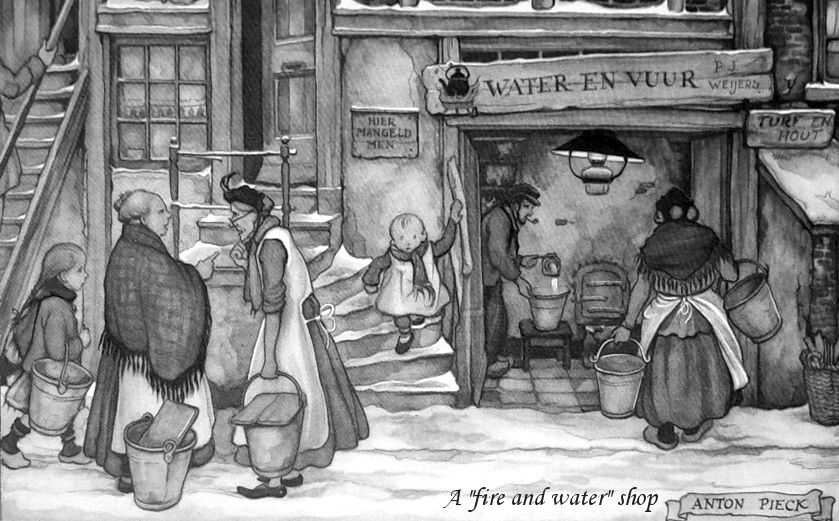
However, since a cat will not thrive on meat alone, and other animal foods are also most welcome to her, boiled fish should be fed to the youngster several times a week. To do this, one can take shellfish, plaice, red mullet, weevers or fresh herring, after cooking in just a little water, then stripped of the bones and mixed with well cooked rice or crumbled bread or rusk. When growing young cats get a meal of boiled rice with fish, Miss Frances Simpson, one of the greatest authorities in the field of cats and author of the wonderful “Book of the Cat,” testified that it contains everything they need to build and maintain their body. However, it goes without saying that on days of fish feeding they should not get meat, and on days of meat feeding they should not be given any fish.
At the same time, one should also ensure good leg formation in the young animal. The bones form the skeleton, the frame, the model, around which the rest of the body is built. Heavy bones give broad legs and claws, a round skull and firm ribs to a cat. So give the young tender pussy first half, and later a whole, teaspoon of Scott's emulsion daily in one of the meals. When the animal is about three months old, replace the Scott's emulsion with purified cod liver oil and add half a teaspoon of phosphoric lime dissolved in warm milk - the only liquid with which this lime bonds well.
As the animal ages, the number of meals should be reduced, but the amount of food should be increased. As a rule, it can be assumed that an adult cat of one to one-and-a-half years old needs two meals a day: a light breakfast, consisting of bread with milk, rusk with milk, broken puppy cake from Spratt, van Hattum, Lammens or another firm, with milk; a substantial lunch, consisting of cooked rice with fish or raw ground meat, rice with cooked liver, stale bread with cooked fish, broken puppy cake, fish rusk or meat rusk soaked in horse meat or bone broth. Do not forget to give your cat or cats some cooked vegetables, chopped and mixed in such a way with the meat or fish dish that even the smartest cat cannot take it out and leave it as less desirable. For this, carrots, turnips, beets, endive and purslane are best. Some cats owe the recovery from eczema and other skin conditions to these vegetables when it could not be controlled by any external treatment.
Bones and fishbones should never be given to cats. The animals are keen on the smell and taste of fish and meat; but they spoil their teeth and are in danger of getting nasty injuries in the mouth, throat and intestines. However, one can make good use of these dangerous things by boiling them for a few days in a completely closed pot, from which no steam can escape [pressure cooker]. Then the mass is finely ground with a spoon or pestle into a kind of jelly, a few drops of cod liver oil (for the animals that like it) are put in it and then there is a food containing excellent ingredients for bone formation. This food is regularly used for the young by many skilled English cat breeders.
Grass is also a beneficial snack for cats. If you don't have it in your own garden, you can grow it in pots or wooden containers. If one has no grass, as in winter, good fresh hay can also serve.
Never give cats too hot or ice-cold food. Hot food can cause diarrhoea. Ice cold food gives mild stomach or intestinal catarrh.
Raw fish is not good for domestic cats, although the animals are often very eager for it. Many a cat, especially a young one, died of persistent diarrhoea after eating raw fish. Likewise, salty herring, smoked herring and other heavily salted foods are very bad for cats and often give the animals all kinds of intestinal disorders. Shrimp waste is also very bad and often causes poisoning. Much better are the good brands of meat and fish meal which can be obtained commercially.
The young cat must also be toilet trained and well-behaved. There is nothing more unpleasant in the house than dirty cats, doing their business wherever they want, giving her whole family an bad name.
Young cats are best housetrained by giving them a good container, filled with a mixture of fire-dried sand and fine peat dust. This mixture allows the urine to drain well and is the best filling, much better than sawdust or ashes, which is also given to cats by some ignorant people. The young pupil is taken to this box every time she sniffs suspiciously in corners; the four-legged pupil will soon understand the use of this piece of furniture. When she sniffs in corners to deposit her gifts, sprinkle some snuff or pepper there; the young kitty will soon have enough of unclean desires. However, one must put new filling in the litter box every day and if one has more than one cat, each one should have his own toilet because cats hate to toilet on the territory of another cat. As a rule, with such treatment, the young cat is toilet trained in a few weeks, sometimes even in a few days.
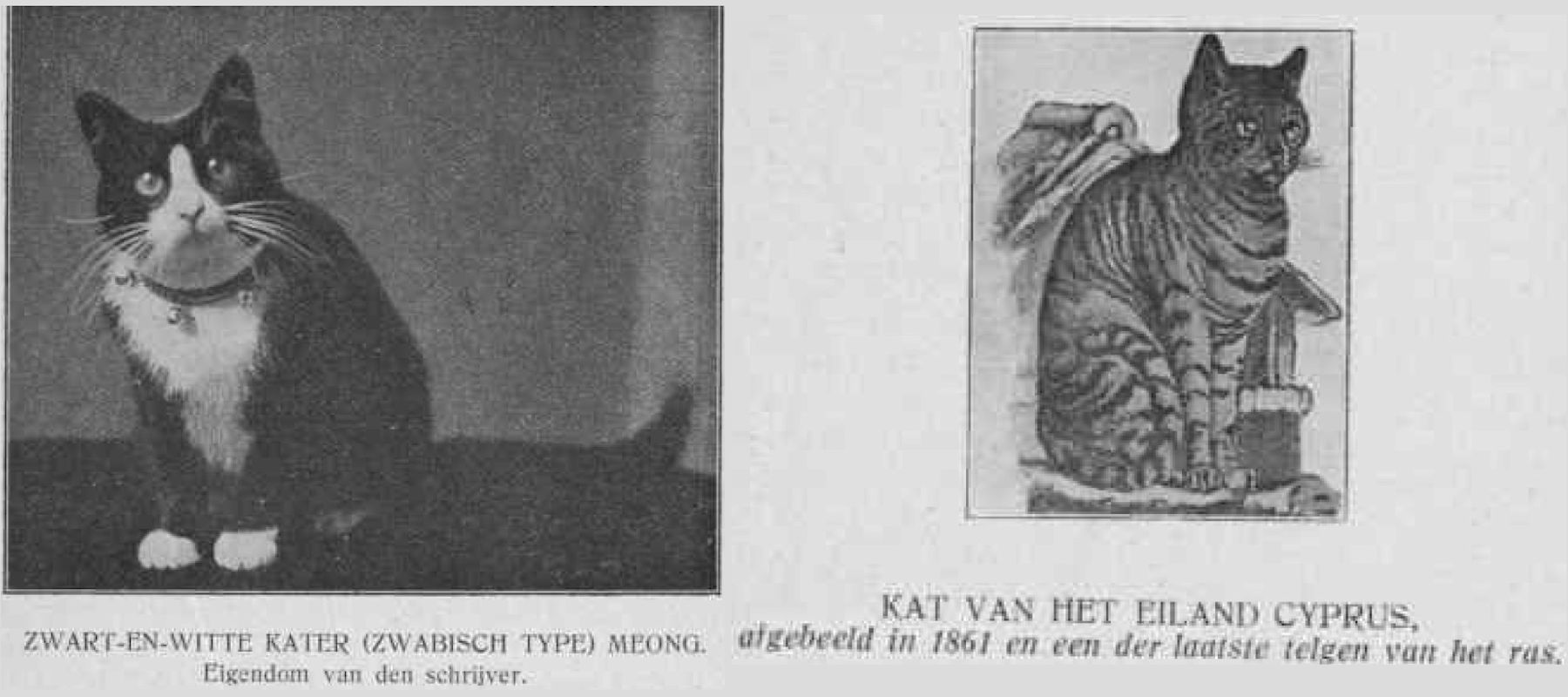
Obedience teaches a young kitten the best by calling to it and then giving it something. When this has been done for a few weeks, the four-legged toddlers will come to you as obediently as the best dog when you call or whistle. The cat should also be expelled without mercy from self-chosen sleeping places and taken to her own bed: a basket, with a soft cloth inside and covered, so that the sleeper does not get a cold back, and preferably a separate chair in the living room, covered with soft fabric. A cat likes to be somewhere high off the floor and soft. I myself always gave my own cats a night bed, consisting of a dog kennel with a linen cloth in the summer and a woollen one in the winter. Indoors, kitty sits on a armchair provided with a soft cushion - and never lies anywhere else. This is the power of establishing good habits.
If you have more than one cat, it is preferable to provide an outhouse with a covered run, where you can lock the animals in order to avoid escapes and other inconvenience. In particular, tomcats should be kept like this. When these gentlemen are not castrated, they can smell most unpleasant and deposit their surprises everywhere. Each tomcat needs its own outhouse with run. Thus the animals are always within reach and they cannot make trips to the homes of female cats, from where they are often badly battered, infested with vermin, infected with skin disease or they may not return at all. Female cats, and neutered males especially, are the best pets and roommates; but one cannot breed with them alone. So, if you have a desire to breed cats scientifically, you need to keep the more trouble males as requisite for breeding.
Males that are not required for breeding should be castrated at the age of seven months. Animals castrated any earlier do not develop such sturdy conformation. Animals that have been neutered are more at risk of dying from the operation, or they become troubled because of it as they suspect further painful treatment from everyone. You should always have the castration performed by an experienced veterinarian who has the right instruments and who can also work with pain-relieving injection. Numerous young, beautiful animals have been screwed up by all kinds of botchers who present themselves as 'cutters of tomcats', but who are even less aware of the animals than the animals have of them. The vet can also castrate a female cat if you don’t want their love-songs or accidentally misbegotten kittens. But this operation is much more difficult than in tomcats and is never without danger.
For far too long it has been believed in our country that the cat, who always brushes and licks himself diligently, can also keep himself sufficiently clean. Because of this stupid misunderstanding there are many cats, full of loose hair, who leave traces of their presence everywhere, who spoil furniture and bedding and who can wreak havoc on our clothes when we visit a house where such a neglected beast is kept. Just like horses and dogs, the cat needs thorough brushing and proper skin care, which means that the animal becomes more clean and healthy looking which greatly reduces the bother it causes.
Very young cats have to get used to being brushed with a soft brush. Later a fine comb is used and the brushed hair is worked with it, while kitty’s toilet is completed by rubbing with a woollen cloth or chamois leather. It is hard to appreciate how such daily brushing gives the cat a different appearance. The hair will shine with a beautiful metallic shine. White cats shine like silver; black cats seem polished; striped cats display their markings with increased elegance. During the moult, all loose hairs are now removed daily and no longer swallowed by the cat, who is now spared from much trouble with bringing up hairballs or matted fur – such hairballs often occur in the most inappropriate places and results in all kinds of damage and mess. Also, thorough and continuous brushing results in the treated cat remaining pest-free and free from bad odours.
If a cat does get pests - fleas, lice, ticks - it is best to put her on a white sheet and rub her over the whole body, against the direction of the hair, with Persian insect powder. Once the patient has been covered in powder from head to toe, wrap her in the sheet and let her sit like a mummy for about half an hour. Then the sheet can be unfolded, and the cat is brushed and combed. Powder and stunned insects fall on the sheet and are then deposited first into in boiling hot water mixed with creolin, and then down the drain. Then the cat can be brushed again, so that the last of the powder and any possible stragglers are destroyed.
Some thoughtless people sometimes dust their cat with insect powder and then let them walk about without a sheet covering them and without brushing, etc. The end, result of this is usually that the poor kitty, who wants to lick away the troublesome and sharp-smelling powder from her hair, as well as the parasites, is killed by the poisonous agent. Many years ago, the insect powder marketed was harmless to pets, and made from dried and finely ground flowers from Persia and Caucasia. Nowadays it is often prepared chemically in factories and is then highly dangerous.
Light-coloured cats, such as white, tortoiseshell, cream, silver-grey, etc., must sometimes be washed. This operation does not harm the animals at all if only it is done with knowledge and consideration. The cat, who must have an empty stomach and certainly not have eaten anything for four hours, is put in a tub or bowl and washed well with lukewarm water and soap - preferably Spratt's animal soap, which never affects the colour of the fur, or tar soap or white almond soap. Other types of soap are no good. Washing is best done with a firm sponge, taking care not to get soap suds in kitty’s eyes or ears. After this, rinse the cat well with lukewarm water without soap, take her out of the tub, rub her first by hand and then with warm, dry white cloths. The still damp cat is then placed on a warm hot-water bottle, covered with a woollen cloth, on which she must sit for an hour. Then she should be brushed with a comb and brush. She is then given some cheerful play with a rubber ball or something like that - and after that the she or tomcat is treated according to its requirements and can resume normal life without any danger of catching cold.
Using this method, I have washed my cats for a number of years and never had a sick animal because of it.

IV. SICKNESS AND NURSING.
An old English proverb says "a cat has nine lives." This saying is certainly based on the fact that the cat is usually tough and healthy, getting ill much less than most dogs, and often recovering from injuries to which other animals would succumb and, if dropped from a significant height, would usually land well without breaking its legs or neck. However, our purring mouse-hunter is not immune from various diseases that can affect her and, if the patient is not properly cared for, can cause premature death.
It starts early with very young kittens, who are still in the maternal nest, or who have just left it to start their lives among people. As a rule, in our country, fragile, weak animals, born without any care from their owner, are the result of all kinds of uncontrolled matings between parents that are weak and often inferior themselves. Because the people, who breed cats properly, scientifically and with forethought, are very thin on the ground in our country, where food animals are better cared for. "First belly and purse, then sport comes only after that", said a foreign animal lover and breeder, who, unfortunately was right. In our country, too, people have never devoted much time to treating and healing sick cats; they would rather kill them and replace them with another one instead of caring for them properly. I can still remember when dogs also lived in such a state of outcasts in our country, and it was only when expensive dogs emerged after the first dog shows that we got vets who knew how to treat such animals. For the cat, however, owners still preferred to consult with a water-and-fireman, a bird dealer, an old cook or an old maid, who had owned a plump, lazy pet cat for years and were therefore expected to be fully aware of cats.
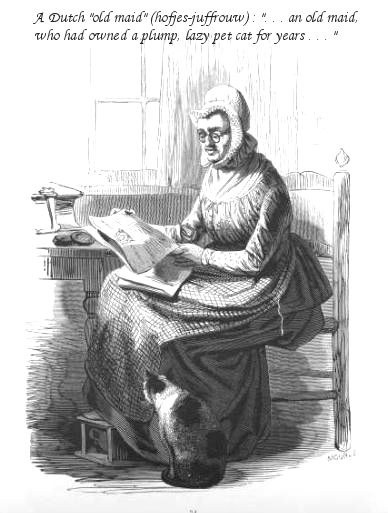
Very young kittens often suffer from very inflamed eyes and eyelids. This is not due to the use of milk, as stupid people say, but to the process of opening the eyes closed at birth. Inflamed eyes must be washed very carefully a few times a day with a lukewarm, weak decoction of chamomile and then dried with a cotton swab.
Diarrhoea is also common in young kittens when they are weaned from mother’s milk to sometimes very unsuitable food. Sour food or milk is especially the cause of this. For this condition, it is best to add some beaten egg whites a few times a day, which is sometimes enough to bring about a cure in one or two days. If this does not help, give one fourth teaspoon of bismuth powder in some egg white until the patient is cured. In an adult cat that gets diarrhoea, it is better to give the animal a tablespoon of lukewarm castor oil first, so that all pathogenic substances quickly leave the intestinal tract, and then use egg white and bismuth until cured.
Seizures in young cats are caused by worms or irritation of the teeth. In the first case, the animal is given a worming agent, preferably by veterinary prescription, or a worm biscuit, as is given to small children, followed by some meat with salad oil or some sardines with their jelly; the dead or stunned worms are expelled with the greasy matter. Teething seizures can be remedied by dabbing the patient's swollen jaws with warm milk and wrapping the animal in warm flannel or wool, with a cold compress or some ice on the head. Internally, one grain of dipotassium bromide is dissolved daily lukewarm sugar water. English chlorodyne can also do good service in such cases.
Cat sickness or distemper, also called “maladie du jeune age,” is a miserable disease, which often affects young kittens and sometimes whole litters at the same time. It is best to vaccinate young animals, preferably when they are still with their mother, with Moore's toxin or similar serum, administered by skilled veterinarians. Once a young animal is attacked by this unfortunate ailment, it is best to isolate the patient in a warm but well-ventilated enclosure. Barley water, milk with a few drops of brandy wine or cognac, no solid food and occasionally a little scraped beef steak are used. Boiled fish, stripped of all bones and finely rubbed into a kind of jelly or jam, is a particularly good food for such young patients. Through this means I once saved a whole litter of young, severely ill cats. Meat broth, fish, and Maggi's peptone broth also serve well in such cases, while the recovered kittens, who are eating regular food again, cannot be given anything better than Spratt's pepsinated puppy meal, diluted with broth and mixed with some raw meat scrapings.
When the trachea is affected, the sick cats can be steamed with a little eucalyptus oil in warm water. With diarrhoea, the course of egg-white with bismuth should help. For convulsions, a warm wrapping with ice on the skull. And waiting is often the only remedy. There are no effective medicines against all kinds of cat's disease.
Bowel blockage, often caused by stupid and foolish feeding of bones and fishbones, can be controlled in young animals by some olive oil or cod liver oil, such as Spratt's cod liver oil biscuits. For adult cats, you can give a spoonful of castor oil or a diet of brown bread, bacon and boiled carrots, mixed with a little bacon fat.
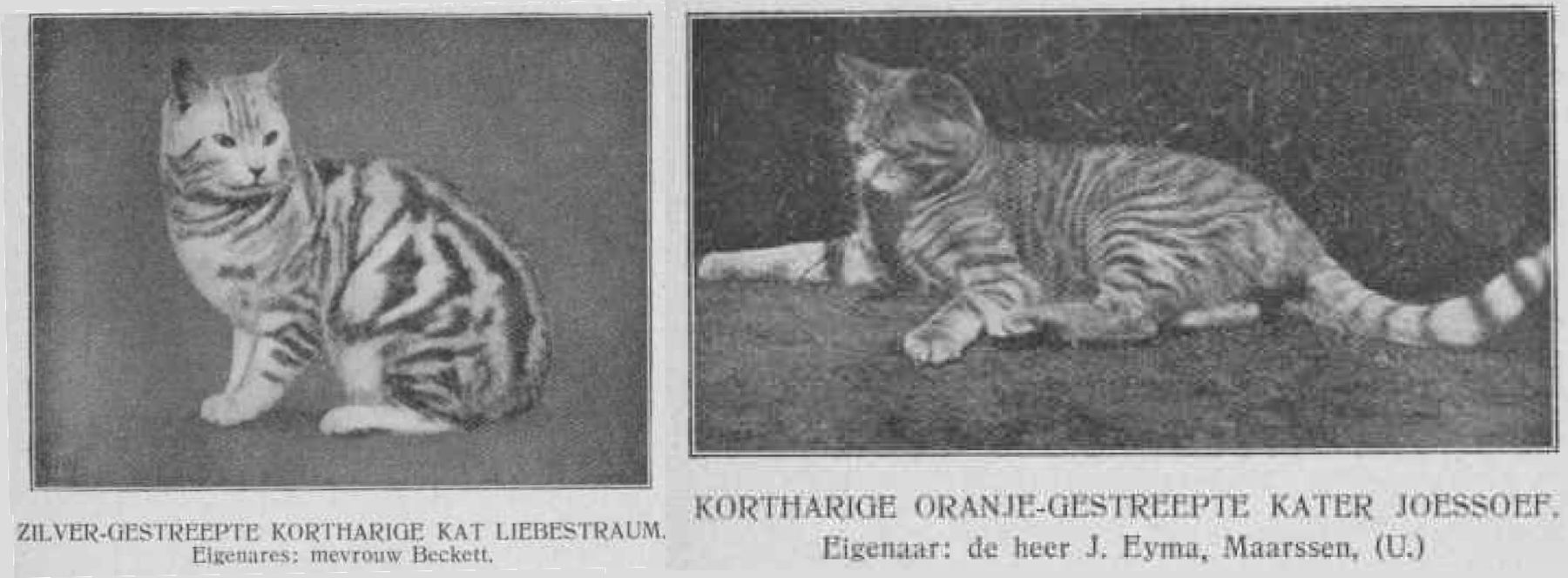
Inflammation in the ear can be prevented by always carefully viewing the cat's ears and immediately removing all dirt from it with an ear spoon. If the cat continues to shake and scratch its ear, carefully pour in a teaspoon of lukewarm almond or salad oil and keep the cat with you for several hours under observation, so that it does not scratch like a madman or slap at its head. Then squirt a lukewarm solution of boric acid in water into the ear, remove all loose dirt and dry the ear well with Brun’s cotton wool. Usually this suppresses the trouble. However, if the cat’s ear remains very sensitive, you must either repeat this course of action or consult a veterinarian, who can use other products that cannot be used by laymen.
Inflammation of the external ear can be cured by one of the following means:
l. boron ointment;
2. an ointment consisting of 2 parts of mercury-nitrate fat, 1 part creosote and 37 parts olive oil;
3. dermatol ointment.
Means 1 and 3 are applied daily. Apply agent 2 once, let it sit for 16 hours and repeat the course after three days if the inflammation has not completely disappeared.
Skin disease can have many causes in cats, as in dogs, horses and other animals. There are both parasitic and non-parasitic skin conditions and it is very difficult for a lay person who does not work with the microscope and who cannot chemically examine the dander to determine whether his cat has been affected by a parasitic or infectious disease or by a non-parasitic disease, that is to say, a disease arising from the blood or constitutional illness. I therefore favour taking cats suffering from skin disease to be examined by a veterinarian and then using the methods he prescribes. However, since not everyone has the opportunity to consult such an expert, I will indicate here some remedies against the most common skin diseases in cats.
Some cats, especially white, multi-coloured and pale yellow, sometimes suffer from a red, rosy skin, where there are no pimples or spots, but which can be very itchy. This rosiness often comes from a constitutional issue or is the result of an incorrect diet with a lot of smoked or salted fish, too much meat or steady feeding with pork. Such animals should be fed raw beef, boiled carrots, brown bread, and, if they like it, drink buttermilk. Externally, give a lukewarm bath of decoction of wheat bran, twice a week. Discard the dregs of bran after boiling and use only the filtered liquid for the bath. Dry the cat after the bath and guard it against cold, as has been said regarding washing healthy cats.
Burning spots and sores can be dabbed twice a day with the following mixture:
Pure Creolin Pearson - 1 tsp,
arnica - 1 tablespoon,
laudanum - 10 drops,
water - 1 wine flask.
After wetting, the affected area should be dried with a cotton swab. As a rule, this drug quickly cures these troublesome, often very itchy conditions.
Sometimes cats, especially stout castrated males, experience itchy dry spots during the moulting period, especially on the head and neck. If these spots are not treated quickly and properly, the animals scratch them and increase their distress. If the patient is well fed, then put it on a reduced diet, do not give milk or cream, but raw meat, boiled vegetables and a vegetable broth to drink. Externally, the burning spots are treated at least twice a day with dermatol sprinkling powder, which can be prepared by pharmacists or chemists.
This powder is also excellent for all kinds of wounds, scratches, bites from other animals and similar damage. I myself have been using it for years for any shaving wounds, facial burns, etc., and have never seen a better and faster healing agent.
Eczema is a red, persistent inflammation of the skin, accompanied by large or small sores, open wounds and sometimes unsightly cracks in the skin. This disease resides in the constitution and blood, and can be caused by over-abundant and lean foods and should be controlled by an accurate, moderate diet of raw meat, cooked fish, brown bread and cooked carrots or beet. Internally, an iron preparation is prescribed by a veterinarian, or twice a week half a teaspoon of flour of sulphur and an equal amount of powdered magnesia, mixed with crushed boiled fish. Very experienced cat experts can also use Fowler's liquor arsenicalis in this case, which has worked wonders for my animals, but is a very dangerous substance. Besides, pharmacies may not provide it except on prescription from a doctor or veterinarian, so lay people cannot use it anyway.
If the eczema is only at an early stage, sulphur baths may be able to control the disease, provided there are not yet any open wounds. Sulphur baths are made by adding 10 drops of potassium sulphate per litre of warm water and bathing the cat in this daily or every other day. However, the patient should stay in the warm bath for no more than 15 minutes, must always have an empty stomach and must be dried quickly with warm cloths.
I have sometimes cured mange in dogs through the repeated and prolonged use of sulphur baths. One could also do this in cats, but first let a vet decide which type of mange it is. There is a highly dangerous, almost incurable, type of this miserable disease, the follicular or hair mange, for which the best remedy is to kill the affected cat in the gas box. Fortunately, this disease is very rare; it never arises by itself, but only through cat-to-cat contact - and people who do not let their animals wander, but keep them in proper houses with covered runs, will not be affected by this ailment either.
Jaundice is also sometimes found in cats, as well as in dogs. The treatment should then consist of half a grain calomel per day and drinking vegetable broth, such as spinach, purslane, etc., with moderate meat feeds.
Rheumatism is combatted effectively by covering the affected areas with warm cloths every day and giving the cat a high and dry place to sleep. It is an ailment of cats who always sleep on the ground or who have suffered cold, especially in winter or at night. A sleeping place near a stove or fireplace, as some people sometimes give to their cats, is also frequently the source of rheumatism.
Anaemia sometimes occurs, even in very well fed cats. The nose, gums and tongue become very light in colour, almost white. The remedy for this is raw, still bloody meat and half a Blaud's iron pill daily which can be obtained from pharmacies or depots of the Perry company.
Burns are treated with boiled linseed oil or olive oil.
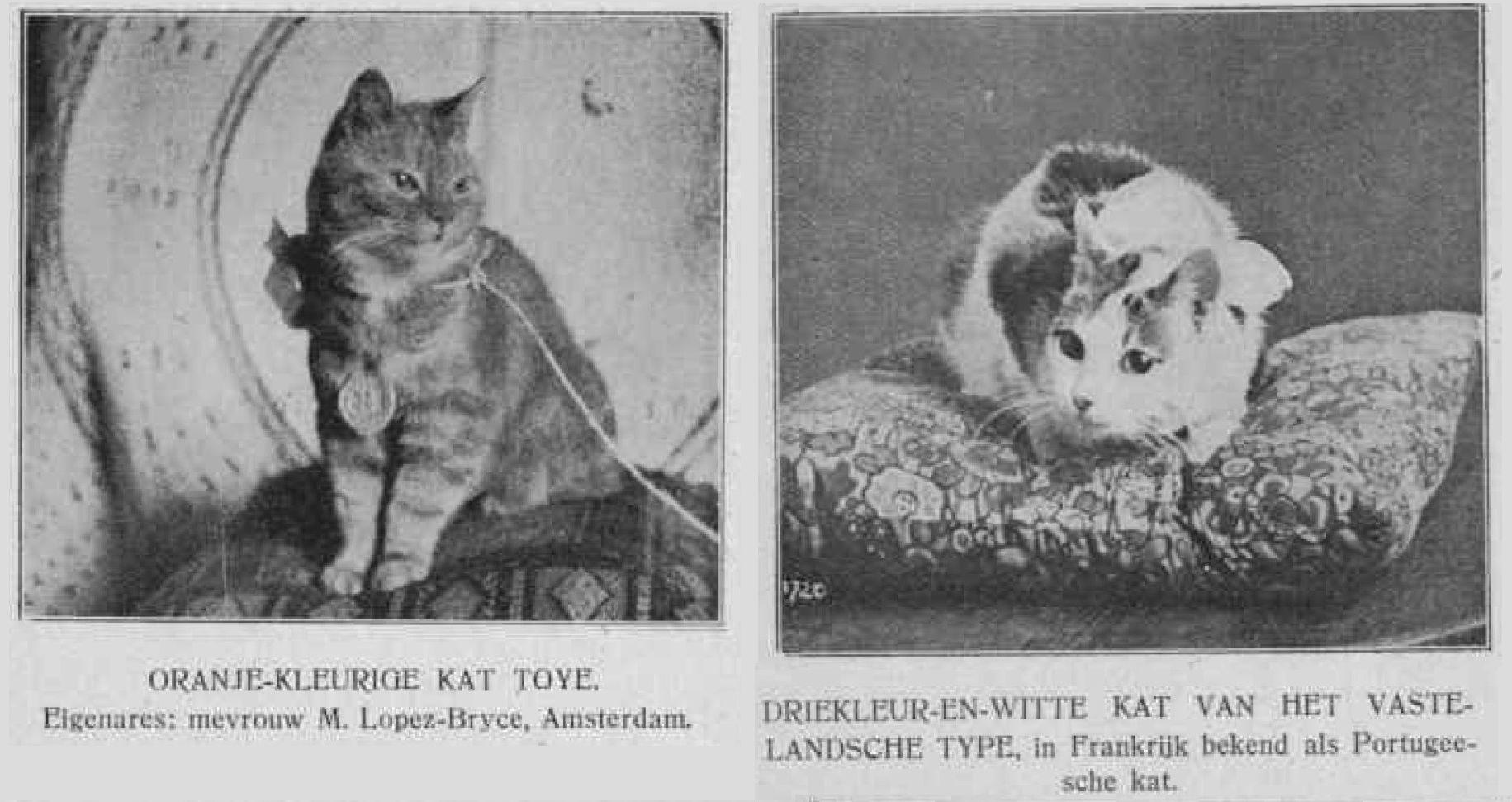
Wasp stings and the like should be moistened with ammonia several times a day, except when the cat is stung on the eye, nose or lips. In such a case, the veterinarian must intervene, because the caustic ammonia on such fragile parts of the body would make the cat furious with pain and cause new inflammation in extremely sensitive areas.
In the previous section of this chapter I have explained as well as possible how to deal with the most common cat diseases. Still, I must urge my readers to call in a veterinarian with their sick patients rather than medicate them themselves. It is easy for a lay person to misdiagnose an illness and the best means, used wrongly, can do more harm than good.
Cats are usually calm, quiet, and even grateful patients when they are sick. The animals understand very well that they are being cared for, treated and dosed for their good and I have sometimes had animals of otherwise combative and difficult temper, who behaved very meekly when ill. However, in order to avoid all resistance and all unnecessary grappling with sick cats, it is best to wrap the patients to be dosed, dabbed, powdered, etc., in a large smock or throw so that only the head or the affected parts of the body stick out. A person with thick gloves can open the mouth of an unruly or troublesome cat, and another, preferably the owner, administers the medicines or does what is necessary to the little patient. But, as a rule, our purring friends are good and submit to our treatment, especially if they are spoken to softly and sweetly, and after treatment they are given something tasty.
I used to have a Mexican tiger cat, who at the beginning did not thrive well in our climate and became very ill. Although he had a very difficult temperament, this animal was meek and tractable and could be treated when something was wrong. In the menageries of Salva and Hagenbeck I often saw the fearsome big cats willingly taking their medicines. Why should this not also be the case with our domestic cats?
Finally, something about the age a cat can attain. It has been said that the cat can live to 10 to 12 years old. The great predators of this genus live to be 50 to 60 years old, and the lion Pompeius lived in the London zoo for 70 years. Since the domestic cat is the smallest member of the Felis family, I believe that such an animal can reach 25 years. I have also often met old cats that were already close to – and sometimes over - 20 years old, and recently a black cat died in England at the age of 26 years. But this animal had always been given faithful care and attendance - and that's what matters.
V. BREEDING AND SHOWING CATS.
Until now, not many beautiful cats have been bred in the Netherlands. This is not to say that only a few beautiful cats were born, because this happened frequently, but they were products of chance, not breeding. Most of the people who keep cats let their purring ladies prowl around unattended, outside at her time of amorousness. If such an unattended four-legged prostitute come into contact with a really beautiful male, whose build, hair and colour suit her, the wanderer gives birth to good, sometimes very good, offspring. However, this is usually not the case. The fathers of most of the kittens born in the Netherlands are impoverished, ugly, degenerate animals, strays and vagabonds, who usually belong to no-one or to careless people, while the real cat lovers castrate their domestic cats. The result of such wild matings is therefore usually ugly, miscoloured, not worth much, and already doomed before it is born. The young cats are drowned on their first day of life, or the most beautiful little ones are kept, and the other offspring form the army of 'nice pussies, who need a good home and are available free or for advertising costs'. But the people who keep their cats in proper enclosures, marry their amorous cats to suitable males, know the lineage of their animals and thus have their own strain of noble cats - oh, their number is so small in our country! They can be counted on my fingers. I only know five in the Netherlands. It is very sad and additional proof that our people care mostly about animals that they can milk or eat!
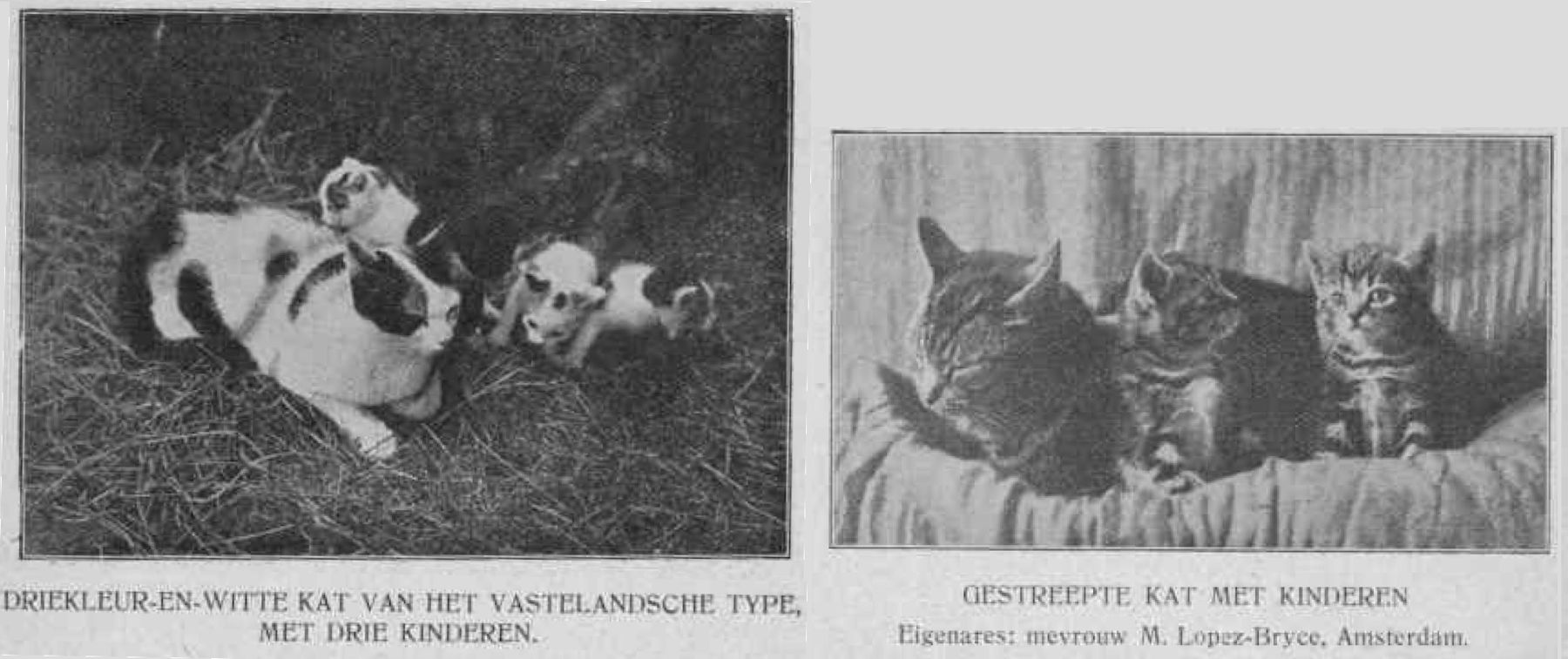
Because the cats have been bred so miserably in our country for centuries, our native smooth-haired cats are usually not worth much. Too narrow heads, too long ears, bad hair, eyes not matching the skin colour, thin legs, claws and jaws without the strength to kill a rat - these are the flaws of thousands of cats in the Netherlands. The best cats are those that live outdoors; they can poach game, catch mice and sparrows, and are therefore not doomed to live on a diet of crusts of bread, potatoes, herring offal, herring skins and shrimp shells, which most native urban cats are condemned to eat. Our own entire cat population is impoverished, and it would take many years of careful breeding to get a strain of cats of true virtue out of those destitute individuals.
So, if you really want to focus scientifically on breeding cats in the Netherlands and choose the smooth-haired native varieties, you have to start importing something. Only the smooth-haired blue variety can be obtained purebred from Mrs. M. Lopez Bryce in Amsterdam, who has been breeding these animals for many generations and who can supply males and females of noble blood. Of the other varieties - all black, tabby, orange cats - one can often get plenty of cats with very nice colour, but all of unknown ancestry. The males, who will give the offspring prestige, must be brought in from abroad. Fortunately, in England - the premier cat-breeding country in the world - you can get young males in all kinds of colours for reasonable prices; they are not yet prize winners, but come from good, well-bred families and promise excellent descendants. Even if the native cats have sprung from a mixture of all kinds of colours and shades, the impeccably formed males, descended from homogeneous ancestors over many generations, soon sire offspring that inherit their good qualities.
This is especially true of the solid black and tabby cats, whose skin must be free from other shades or miscoloured tones. The white cats consistently get blue eyes from these crossings. The whole physique of the cats makes progress, because noble blood always prevails, just as many deteriorating horse breeds have been completely regenerated by the import of flawless stallions.
So the prospective breeder, who wants to focus on producing beautiful black, tabby, orange or yellow smooth-haired cats, has only to buy an impeccable male cat from abroad and some good dams of native blood. The enthusiast who wants to devote himself to breeding Persians, Siamese, or Abyssinians, must follow the royal bloodlines and import all his breeding animals from abroad. These strange cats are only present in this country in limited numbers, usually in steady hands and usually only for sale if something is wrong with them and, therefore, their first owner is tired of them. Fortunately, the above-mentioned luxury cats can always be obtained from England if one turns to well-known breeders, not professional traders, or to the boards of the various specialist clubs. The English fanciers are usually very sincere and honest people, who sometimes demand high prices, but also actually deliver something good. I have never had bad or inferior animals from such people who have an interest in upholding their reputation.
If you have been fortunate enough to get good animals for a reasonable price, the new cattery must also be furnished as required. Spacious, airy, but draft-free loft for the stud cat, which of course may not wander around unattended like the worthless colleagues of his breed. Significant housing is needed for the two or three ladies of the harem, who can safely enjoy each other's company, provided they are not in heat, pregnant or just given birth. Such cats must be kept quiet, isolated and calm, otherwise they will fight each other and there will be all kinds of trouble. Do not forget a large playground, sheltered from the rain and wind, for the future young that will one day be your pleasure and glory, and that you cannot take care of carefully enough. Young pedigree cats are delicate.
One should always keep the following in mind when breeding:
spring kittens are best;
better to have three excellent examples than twelve bad ones;
never breed more than one litter a year from the same mother;
the less pretty kittens should be quickly disposed of before their maintenance costs a lot;
the good qualities of a cat enter through the throat; [good feeding]
the observation and care of the owner make young cats grow like the proverbial cabbage.
If one has a strain of cats, whose colour is not completely satisfactory, and in which one would like to bring a better hue or shade, then this goal can be achieved by crossing with differently coloured animals.
Black males bring darker markings to tabby cats, brighter blue in blue animals, and the missing black in light-coloured tortoiseshells.
Orange-striped males bring the yellow tiger colour to brown tabby cats. If the black stripes of the offspring become too light, cross again with all black.
Dark blue males help boost the pale colour when blue cats become too greyish or pale-lavender.
Anyone who is so happy to have his own nicely coloured and well-built cats will soon think of exhibiting his four-legged friends when there is a cat show somewhere. This is a very commendable endeavour, which serves to promote one's own hobby and the hobby of others and which can also bring honour and financial benefit, provided that they start off well and always keep in mind that quality is more important than quantity at a show, and that it is much better to show two flawless cats than twenty bastardized, degenerate or shabby individuals.
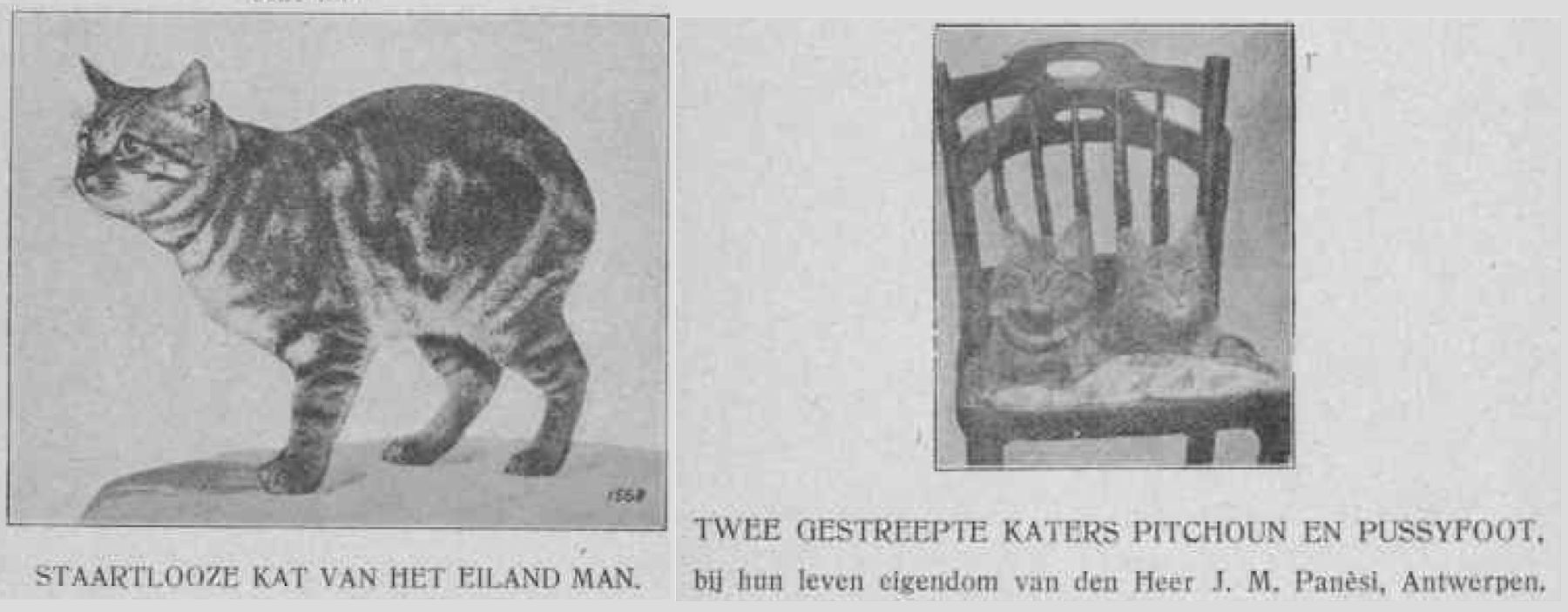
The first cat show was held in London in 1871, on the initiative of the renowned painter Harrison Weir, the author of "Our Cats", the first specialist book on cats. This exhibition was a huge success and in the same year, 1871, led to the foundation of the National Cat Club, from which all kinds of specialist clubs were later created. Harrison Weir has had credit for his invention, and the divisions and arrangement which he laid down in 1871 are still followed almost in their entirety in England, and many cat exhibitions are held there every year.
In the Netherlands, the first cat show was held in Amsterdam in 1890. This show attracted a great number of visitors, although classification and judging were rather strange.
A good Dutch cat show should be arranged like this:
A. Long-haired cats (Persians).
1. White; 2. Black; 3. Blue; 4. Tabby, except orange; 5. Orange and Red; 6. Tortoiseshell and Tortoiseshell with white; 7. Silver or Chinchilla; 8. Other colours; 9. Gelded males.
B. Short-haired cats. (Europeans).
1. Tabby, except orange; 2. White; 3. Black; 4. Blue; 5. Orange and Red; 6. Tortoiseshell and Tortoiseshell with white; 7. Other colours; 8. Gelded males.
C. Cats from the Isle of Man. 1. All colours; 2. Gelded males.
D. Cats from Outside Europe.
1. Siamese; 2. Abyssinians; 3. Other varieties not mentioned in the catalogue; 4. Gelded males.
E. Ring class.
The males and females in this class are presented on collar and leash, as a sign of good training and deportment.
In Belgium, the first cat show was in Brussels in 1891, which also attracted numerous visitors and, thanks to proper classification and qualified judges, showed the real cat-fancy. The weekly magazine "Chasse et Peche" [Hunting and Fishing] gave a thorough report of this show, which showed that a real cat expert was speaking; one who correctly judged breeds, varieties and colours.
Strangely enough, it took until 1896 for a cat show to be held in Paris, that sporting City of Lights. This show was organized by the editors of the daily newspaper "Le Journal", was held in the palm hall of the Jardin d'Acclimatation and was a marvellous success. The committee of organisers and judges consisted of the main enthusiasts of France: Francois Coppee, Catulle Mendes, A. Theurich, A. Sylvestre, Mirbeau, E. Lambert, Deschaumes, A. Porte, L'Hoest from Antwerp, Pierre Megnin, Steinlen and M. Vaucaire. One could not wish for better cat-people; all were lifelong worshippers, owners and authors of the charming cats.
Strange animals were at this show: beautiful cats from Siam, a novelty at the time; a tame serval, who only wanted to know his owner; and a young Cayenne jaguar, [margay] owned by Madame Dufresne, - an animal similar to a lap cat, and which was judged the nicest and friendliest entry.
So, if there is now a cat exhibition in your city or not far outside, you must first carefully discuss with which cats you will take there. The richly furred Persian, the smooth European cat, the yellow Siamese all have good chances of winning if they are in good condition. But there is more to watch out for than purity and condition. You should never take a shy cat, even if it is extremely beautiful. Such an animal creeps anxiously into a corner of its cage, presents itself miserably to the judge, has a completely distorted face by hissing and growling, and often has to give way to a less beautiful, but more confident colleague. Also, never go with a really bad-tempered cat. Such an individual cannot, if necessary, be removed from its cage during judging and is therefore held back. Never go with a cat which, though impeccably built, lacks beauty. The all-black cat with white hair on the chest, the all-white cat with one dark spot, the odd-eyed cat, the tabby cat with white markings, none of them get placed at a show, no matter how sweet, beautiful or nice they are.
It is very convenient if you get your cat or cats used to the cage beforehand. Experienced cat people abroad always have a few cages, like those used at shows, at home. The future champions must sit in these cages for a while and be given something tasty while in there. Then, when the show date arrives, the animals are not reluctant to sit in the cage, but sit quietly and thus appear to good efect.
Also teach your cats to wear a collar and walk on a leash with you. Even if there is no 'ring class' at the show to be visited, it will make it easier to take your cats to and from the show.
Also get your cat or cats used to the food given at shows. This food is usually cat food or puppy food from Spratt or some other company, soaked in water, milk or stock, or sometimes given dry. So, if the cats intended for showing occasionally eat this food at home, they will not go hungry later on due to an aversion to unfamiliar food.
In particular, consider an effective travel kennel if the cat is to be displayed in another place. Travel crates that are too small have already caused the death of many animals. Those that are too big make the cats shy. The best travel kennels are made of wood, well ventilated, with strong iron bars in front of all openings and are fitted with protruding metal around these openings so that one cannot put anything on top of them or slide anything flat against them in the train, so that the four-legged friend would suffocates from lack of air. The bedding should be a wool blanket in winter, and hay in summer. The cat must also be used to the travel kennel beforehand in order to maintain its calm and tranquil appearance.
Many people have the habit of washing the cat just before the days of the show. This is very wrong and often leads to it catching cold. Comb, brush and chamois must, however, be used diligently up until the moment of departure, so that the cat’s fur has rich, brilliant sheen.
TWO STRIPED KATERS PITCHOUN AND PUSSYFOOT, in their lives owned by Mr. J. M. Panèsi, Antwerp.
These animals belong to the Maine cat breed, which lives in the North of the United States. They are thought to be descended from cats of the first settlers, crossed with wild cats from the forests. They are striped and plain brown. The Maine cats have longer snouts than other domestic cats, reminiscent of the heads of the royal tigers.
Ga ook nooit met een dier, dat teekenen van ziekte of ongemak vertoont. Eene kat, die hoest, loopende oogen heeft, met de ooren schudt, teekenen van diarrhee vertoont of zich vinnig krabt, behoort niet op eene tentoonstelling, maar onder geneeskundige behandeling te huis.
Do not give your exhibition animals foolish big bows around their necks or give them ridiculous names. At shows I have seen tomcats called Carolientje and Mies. Why given such prowling gentlemen women's names? I also saw more than one she-cat called Mirza - a Persian word meaning nobleman. At the time, Mirza Mahmoud Khan was a Persian envoy to The Hague, and Abbas Mirza was a famous prince. The people giving their cats this name thus prove their own stupidity and ignorance.
When you arrive at the show with your cats, take a good look around, pay attention to everything, but don't ask about anything like a real green-horn. Maintain a real cat-like calm under all circumstances and never be tempted to, if your animals were not given the awards you expected, to use bad words or to question the judge concerned, as unfortunately happens so in the judging of dogs. If the crowning was really done unjustly or neglected the breed standard, then such a judge has disgraced himself and it will not be long before skilled connoisseurs will point out his ignorance in the sports magazines. As a rule, however, the judge knows his breeds and the injustice committed only exists in the imagination of a disappointed exhibitor who imagined his crow to be an eagle and therefore feels bitter because the scales have fallen from his eyes.
Many disappointments and inconveniences can be avoided by the exhibiting cat lover if he regularly keeps abreast of everything that is written about cats. Therefore, I cannot recommend enough that every enthusiastic breeder of noble cats should subscribe to "Avicultura", the well-known, richly illustrated weekly magazine published by W. v. Gorcum, in Assen, in which "News from the Cat World" is always published, being a summary of everything that the press of England, France and America has printed about cats, accompanied by the experiences and memories of someone who has fastidiously kept cats throughout his life. For more detailed information on all cat matters abroad, subscribe to "Fur and Feather", an illustrated weekly magazine published by Watmough, Idle, Bradford, England, which provides a weekly page on cats written by the greatest cat experts in the world.
If you want solid, extensive literature about cats in book form, I can highly recommend:
P. Mégnin. Notre ami le chat.
Champfleury. Nos chats.
Miss Frances Simpson. The Book of the Cat.
Miss Frances Simpson. Cats for pleasure and profit.
C. A. House. Cats, show and pet.
J. M. Panèsi. De Kat.
By faithfully practicing advice from such solid literature and regularly visiting exhibitions, where the animals are actually seen and compared with each other, you cannot fail, and many will view cats with a much better and wider eye than before and thereby contribute hers or his efforts to establishing a thriving cat hobby in the Netherlands.
APPENDIX (TRANSLATOR’S NOTE.)

On May 10, 1890, the first Dutch cat shown was held at the Volksvlijt Palace (Industrial Palace, or Palace of Popular Diligence) in Amsterdam. This was a large exhibition hall, inspired by the Crystal Palace in London, on the Frederiksplein, Amsterdam. Three days after the show, a report in “De Maasbode” said “I consider the usefulness of a cat exhibition problematic, almost as questionable as that of exhibitions of pot bellies, infants, bald heads and beautiful women […] ”
There were about 70 exhibitors, mainly from Amsterdam. In addition to classes for the largest, the heaviest, etc., there were also the following classifications: East Indian, East Indian short-tailed, lop-eared cats from China, club-tailed cats from the Isle of Man, Siamese, long-haired and short-haired cats, mainly divided into colours, e.g. the blue cat, or the black Angora. Prize medals were awarded to generate interest in the cat breeding and showing hobby. Of the 70 entries announced, only 56 turned up, so several prizes were not awarded. 4,000 people visited the show, especially in the afternoon when the entrance fee was halved.
Visitors not only saw cats, there were many things for: paintings, drawings, books, figurines and cat baskets. IN common with English cat shows, some of the feline exhibits were for sale. In the category 'Suckling cat with young' a five year old black cat called Minibus with her five kittens, was offered for sale at five guilders, with the note: 'very good rat catcher'.
Paintings by the famous cat artist Henriette Ronner-Knip were also on show. Her works were in great demand, both in the Netherlands and abroad. Lithographs of her works were available at lower prices.